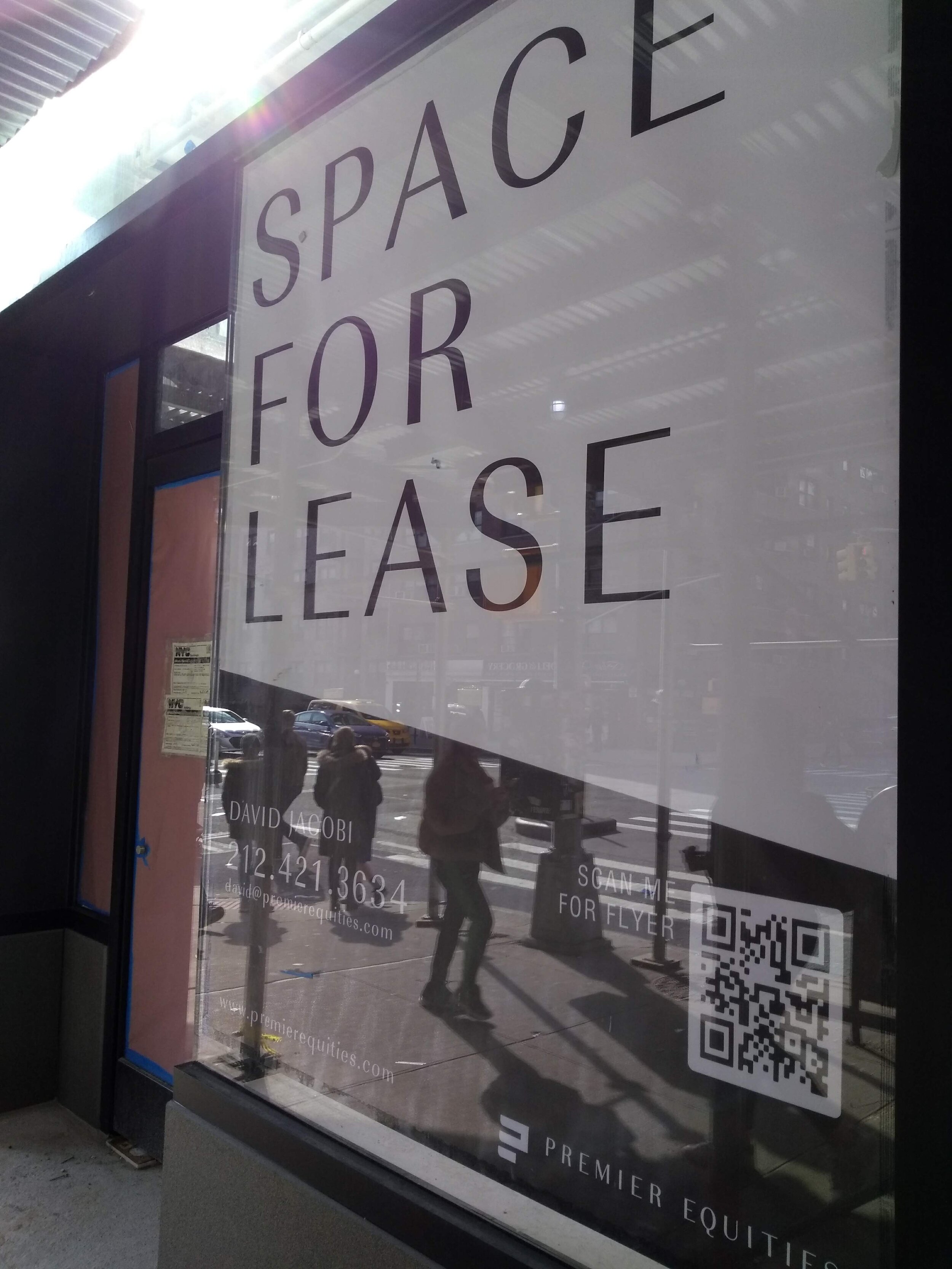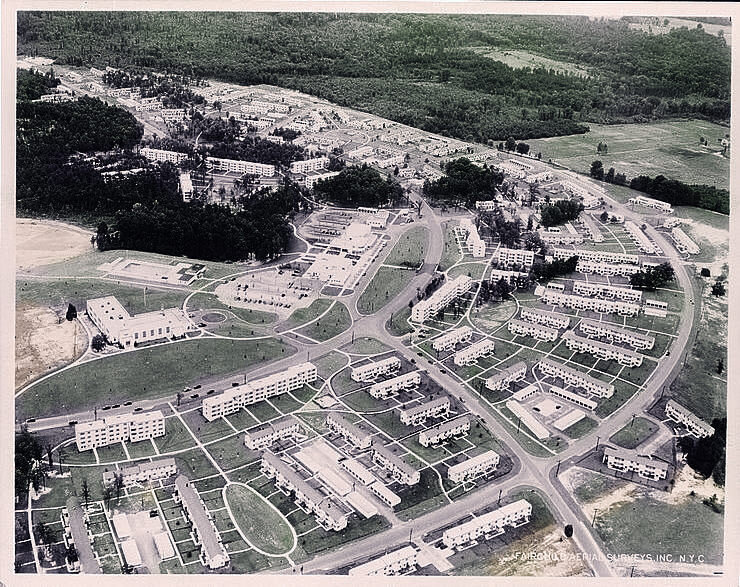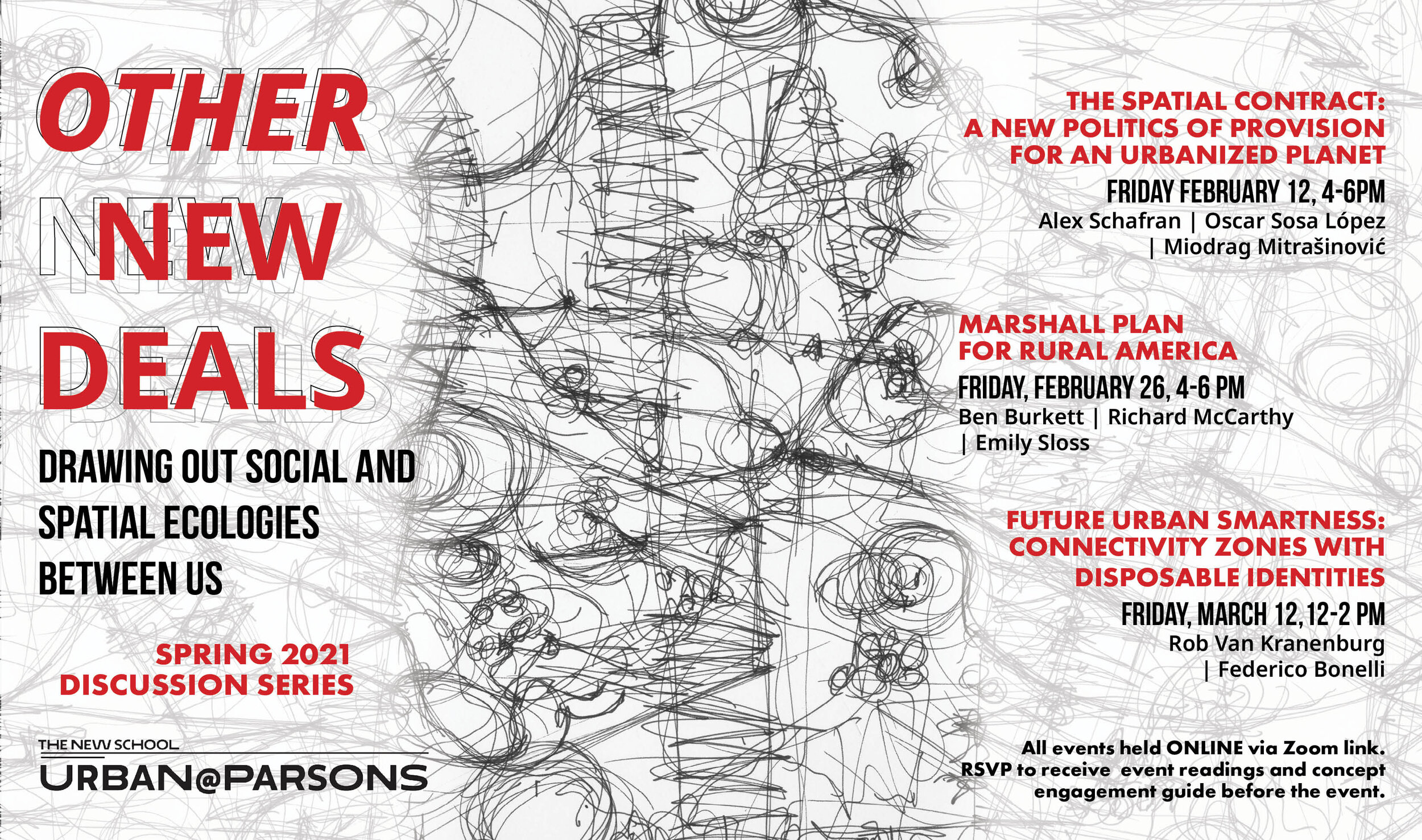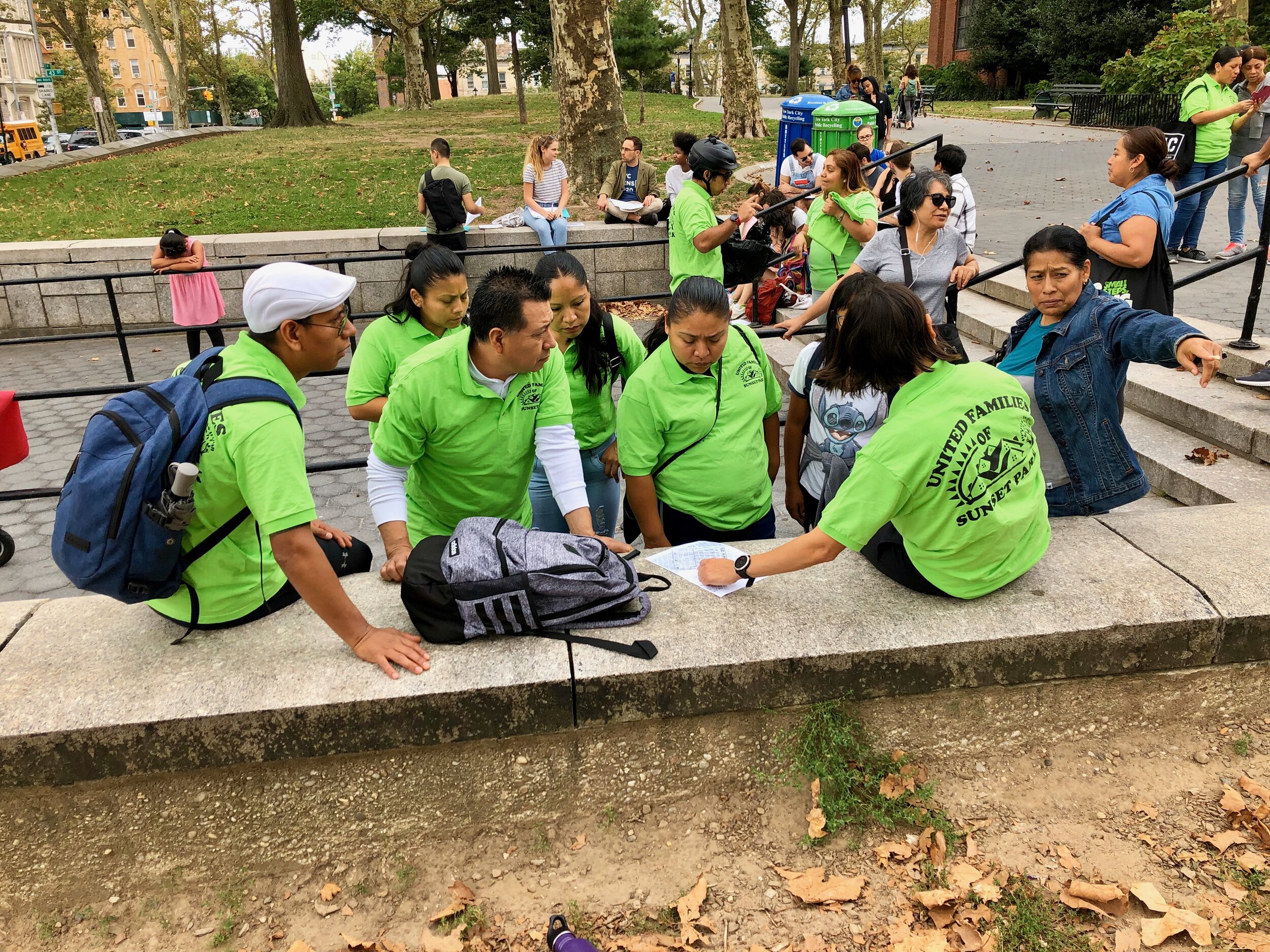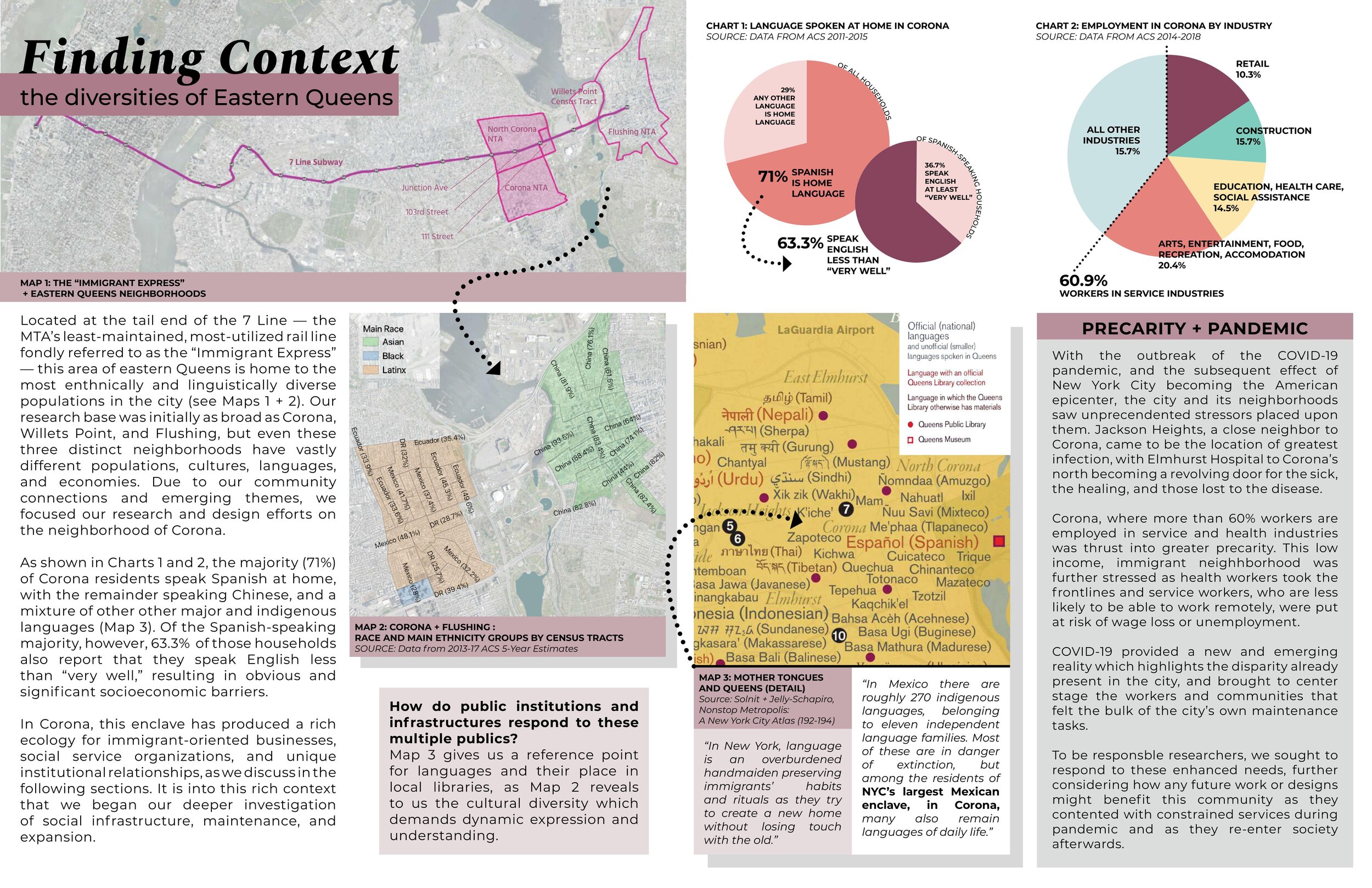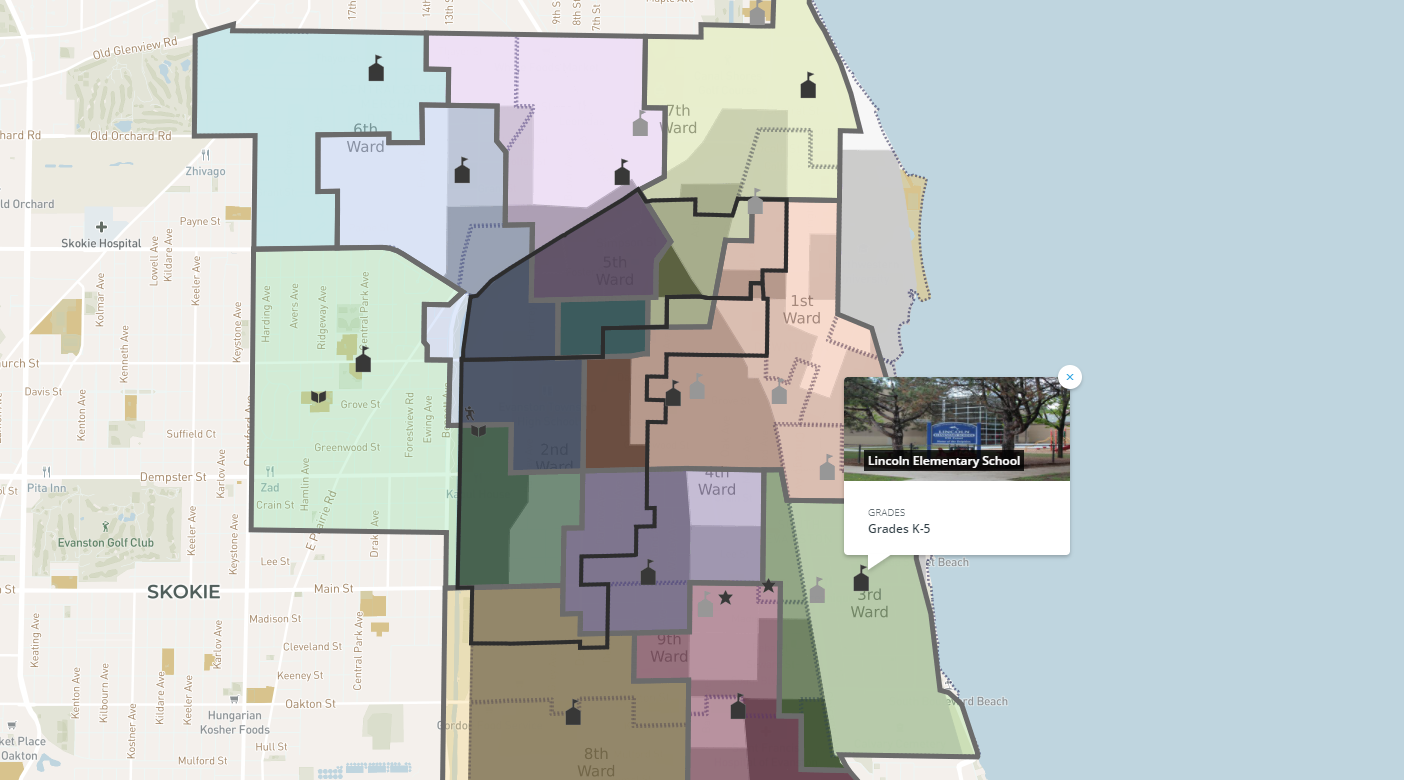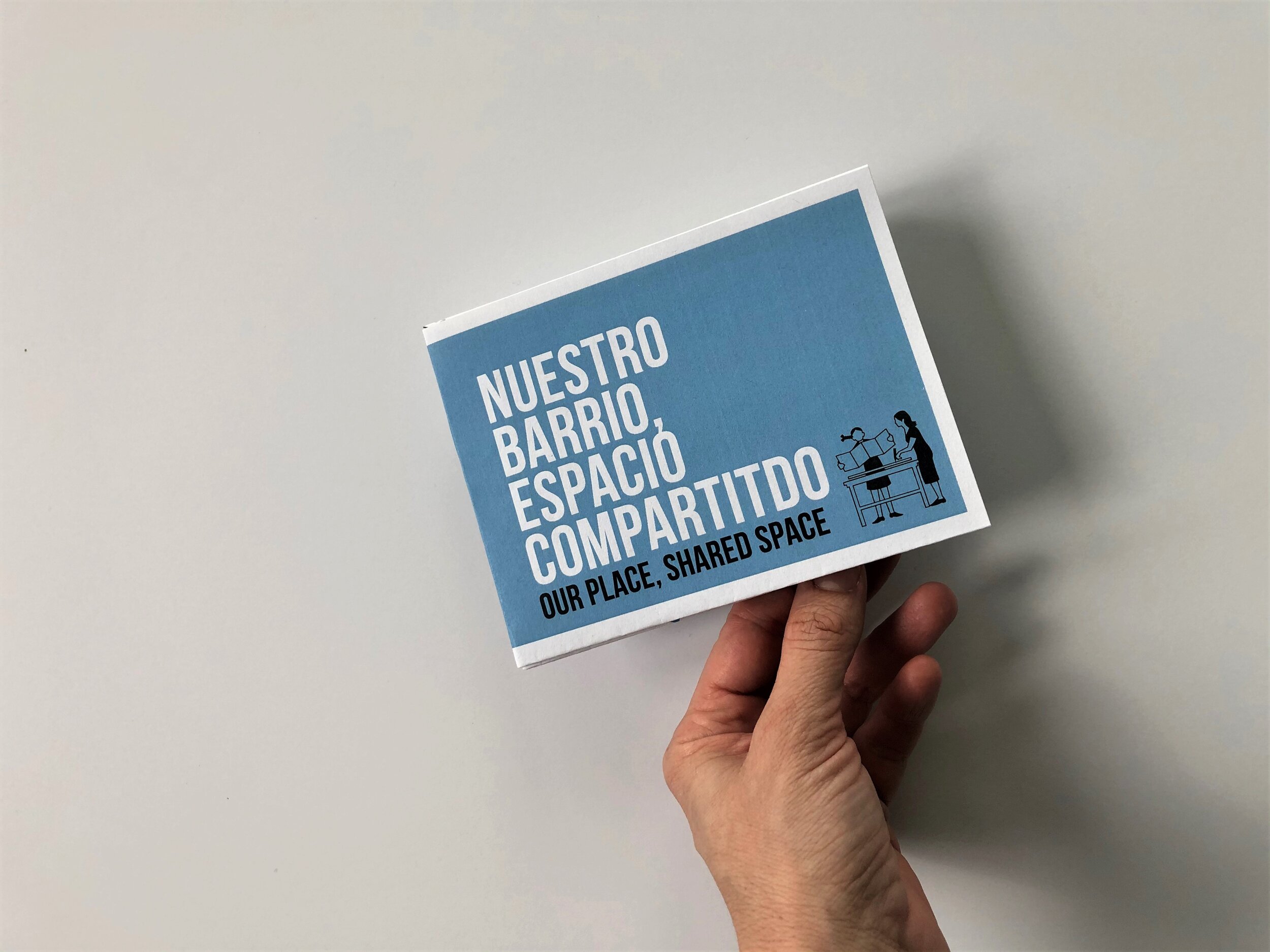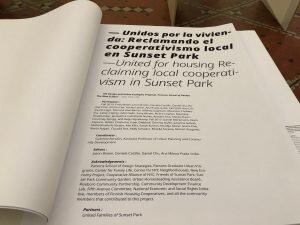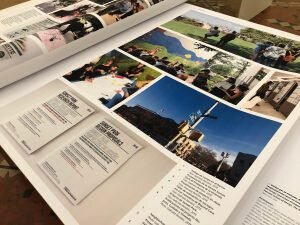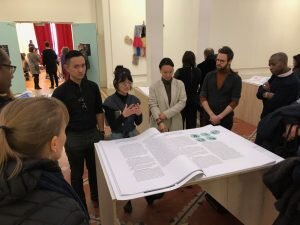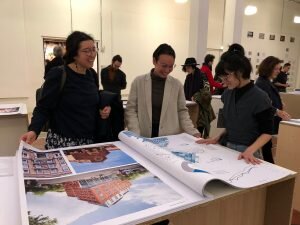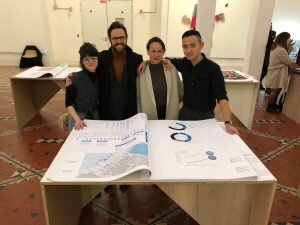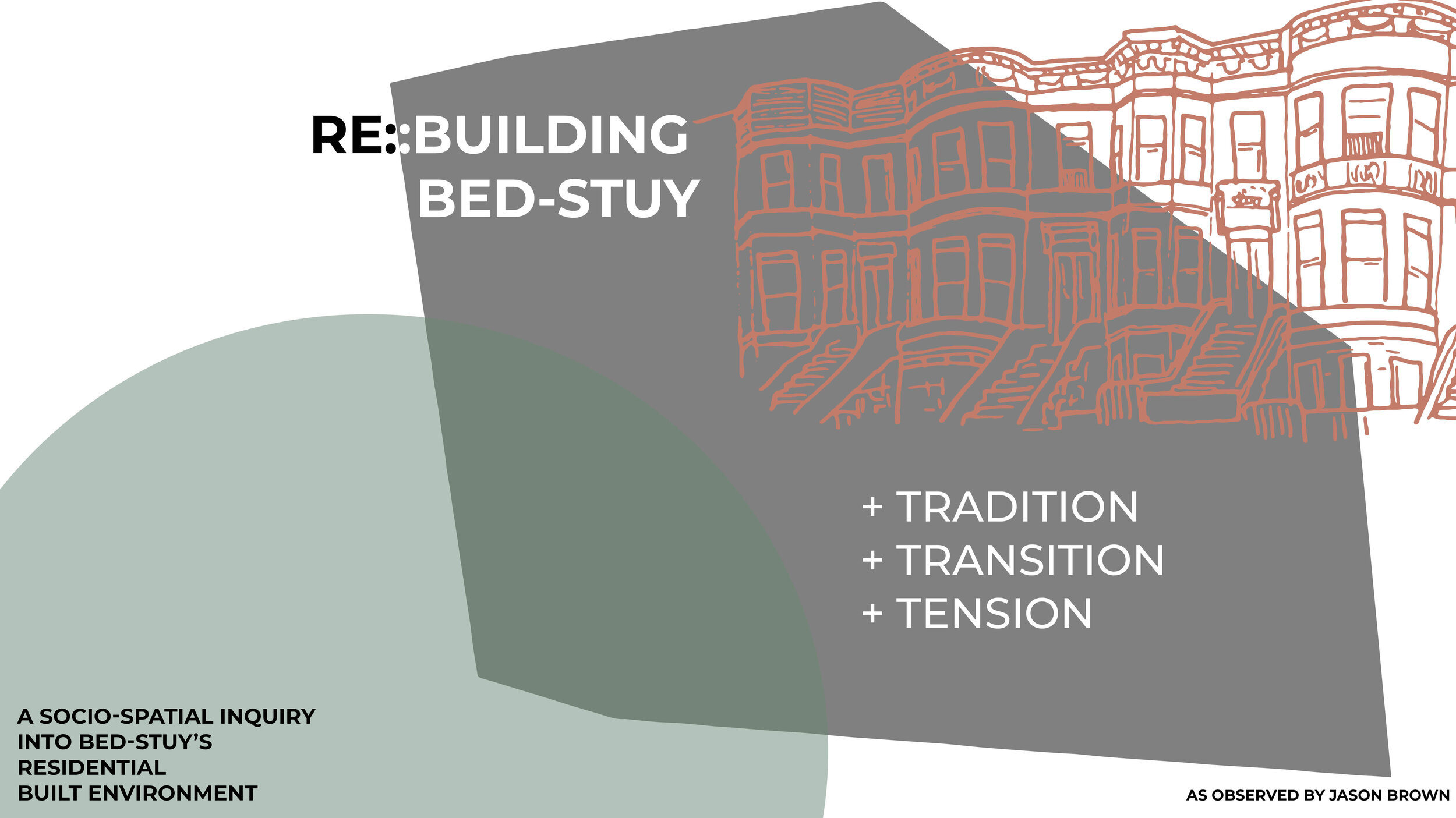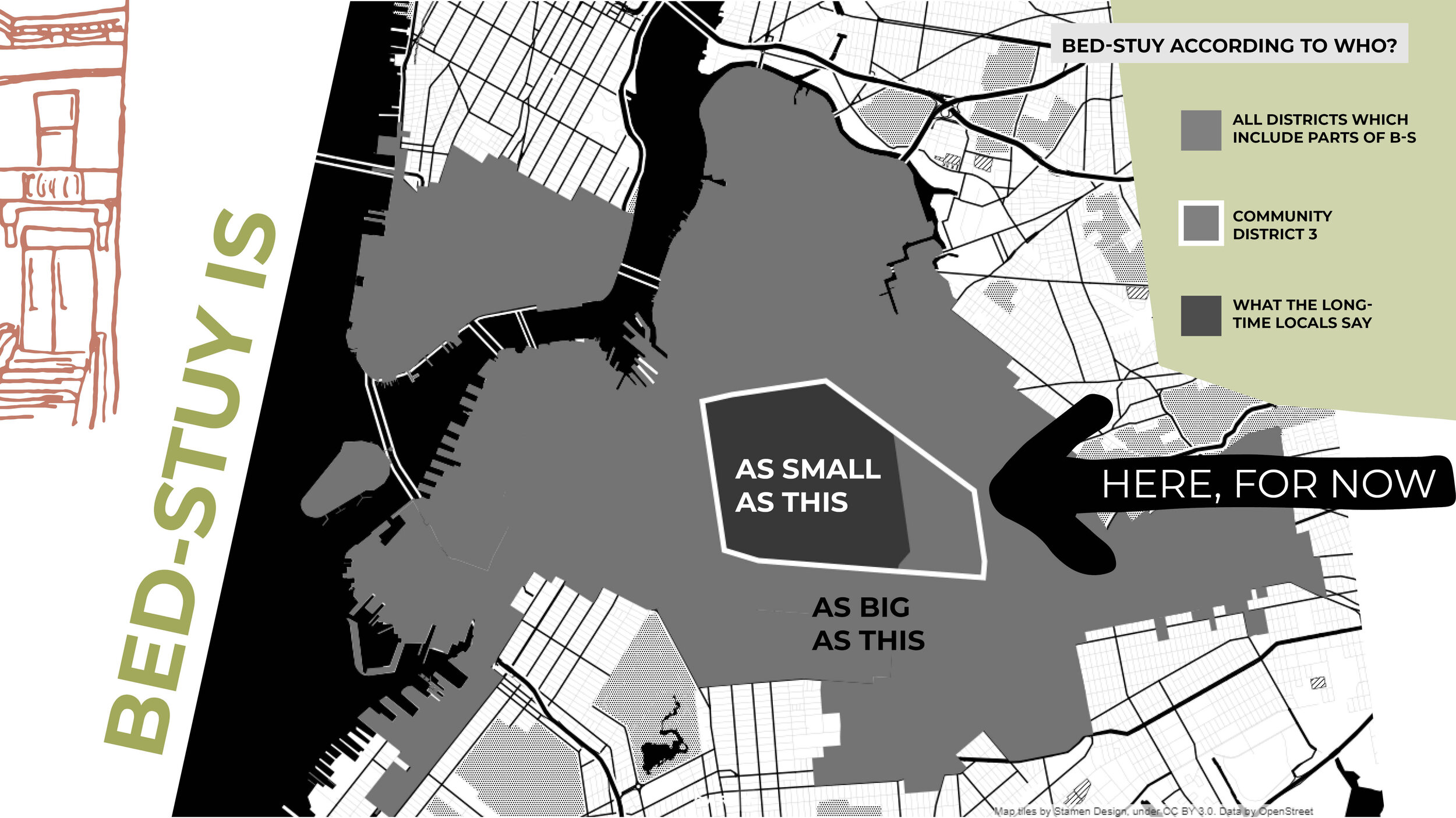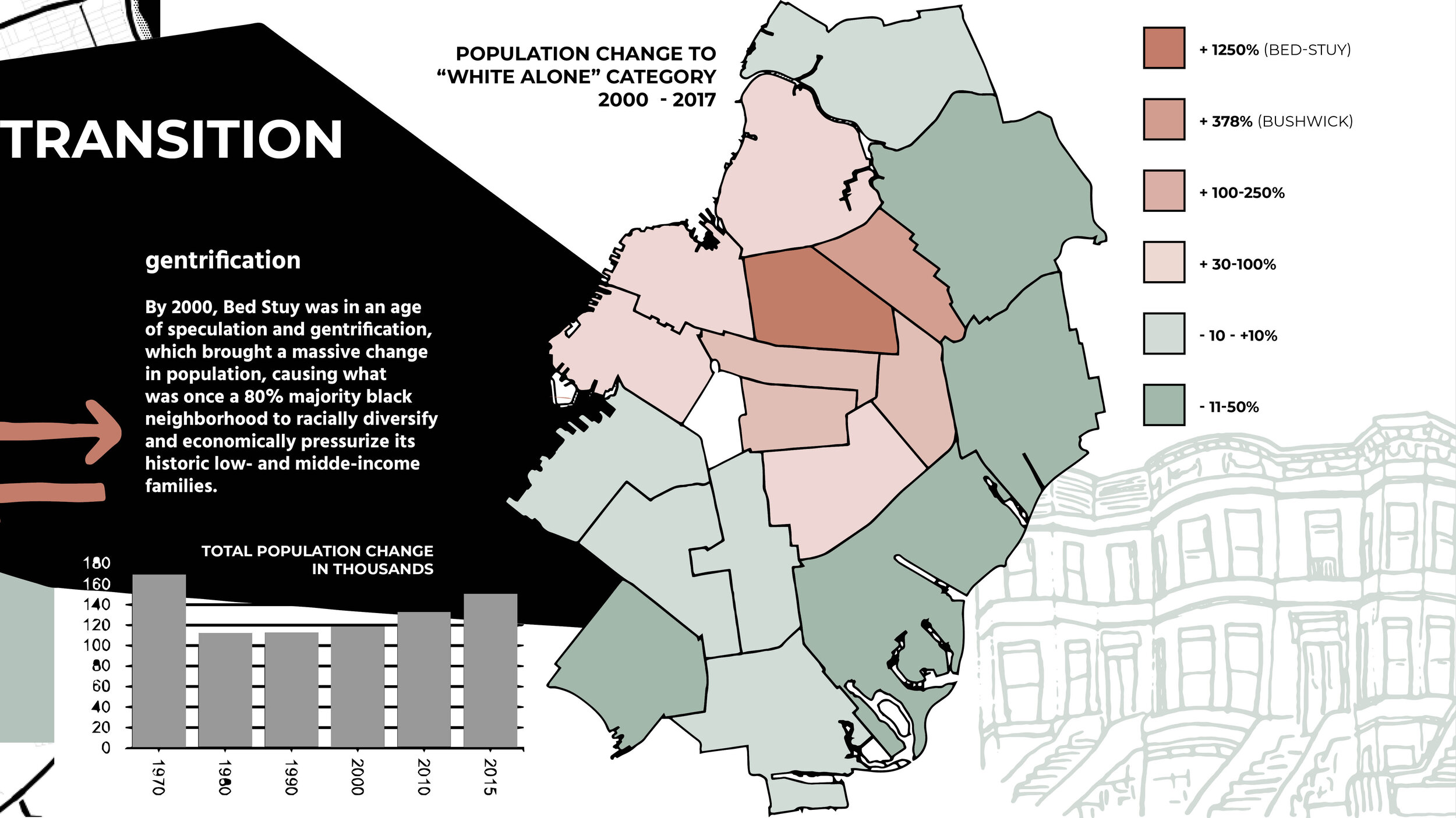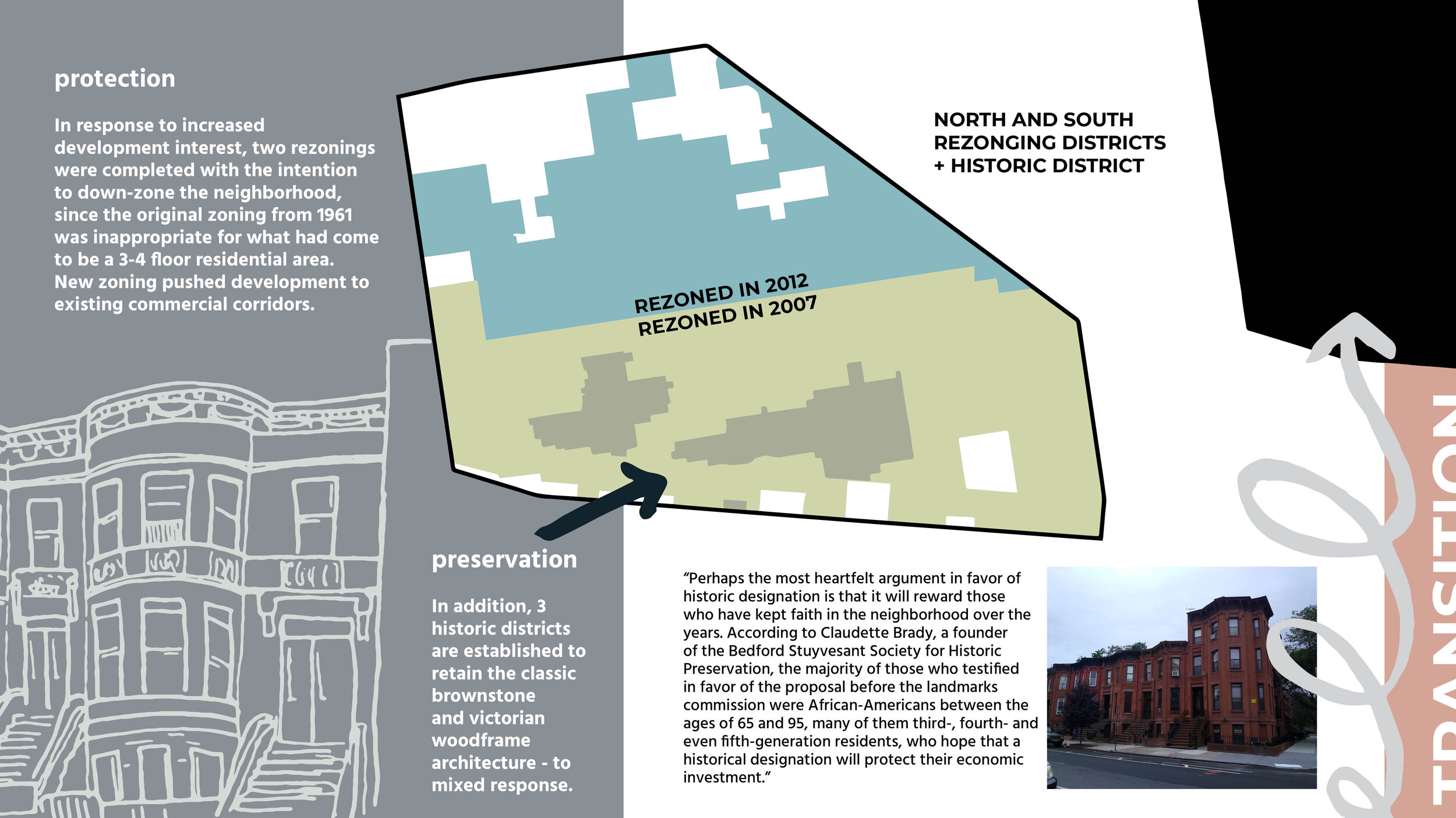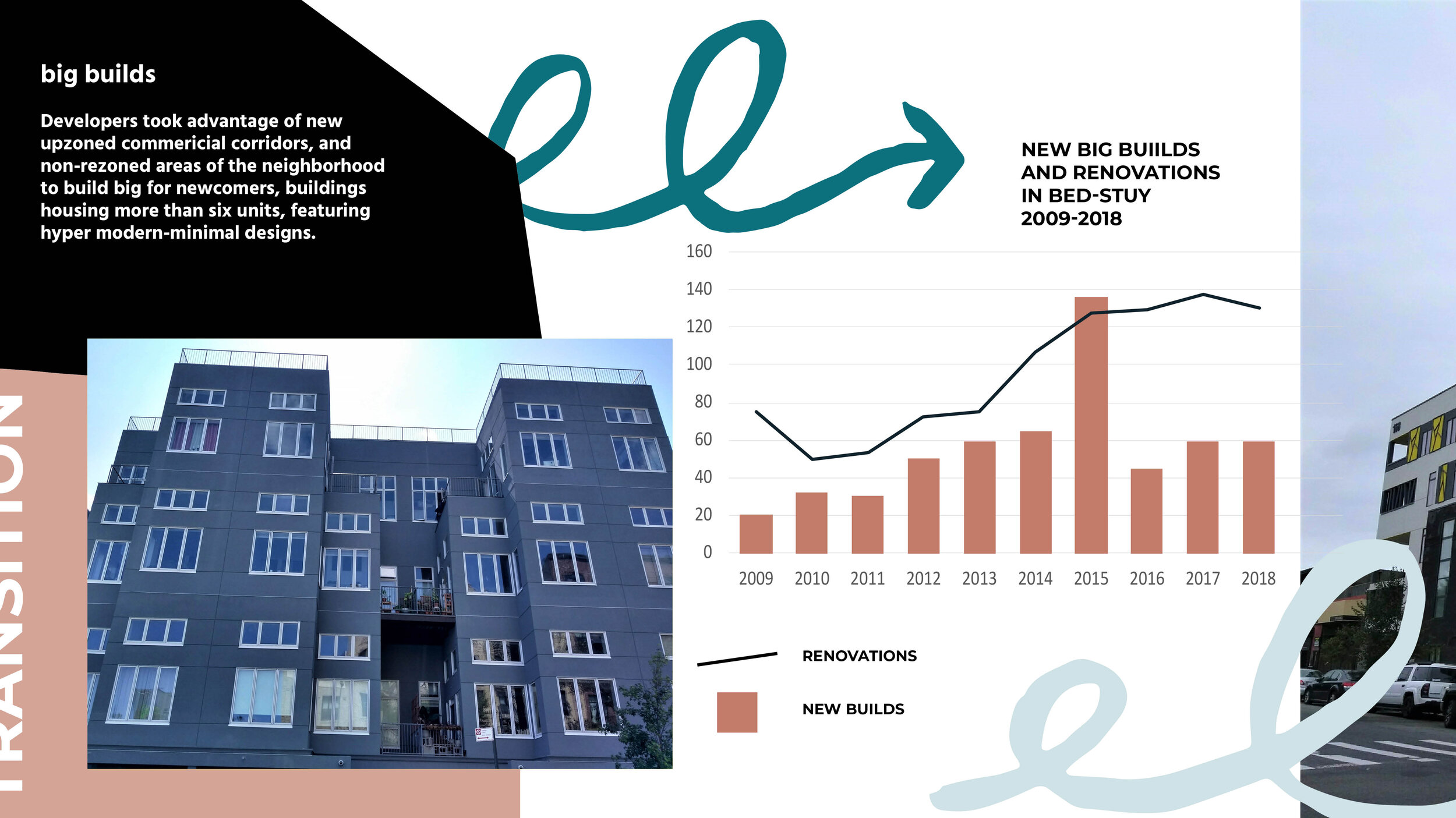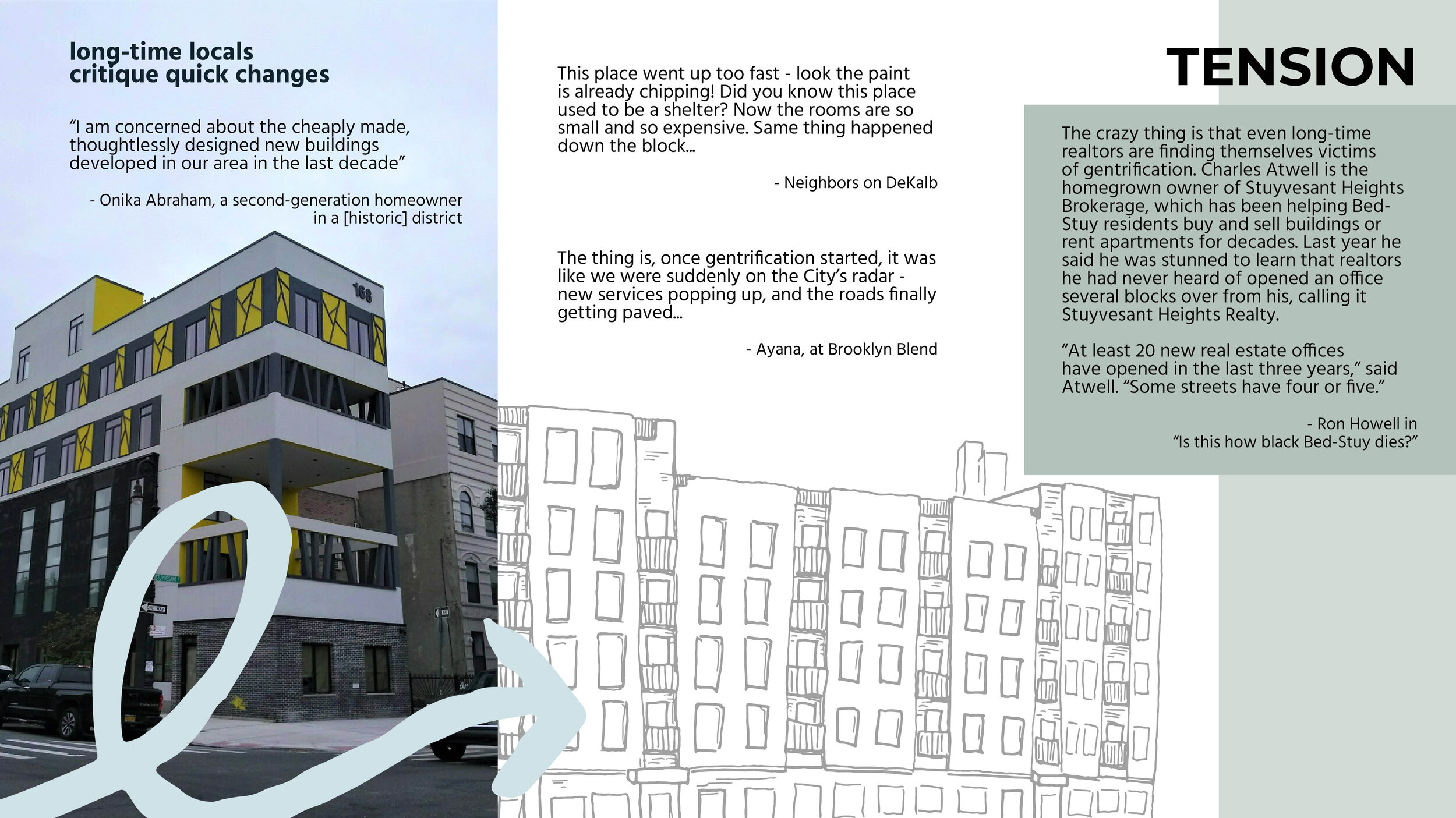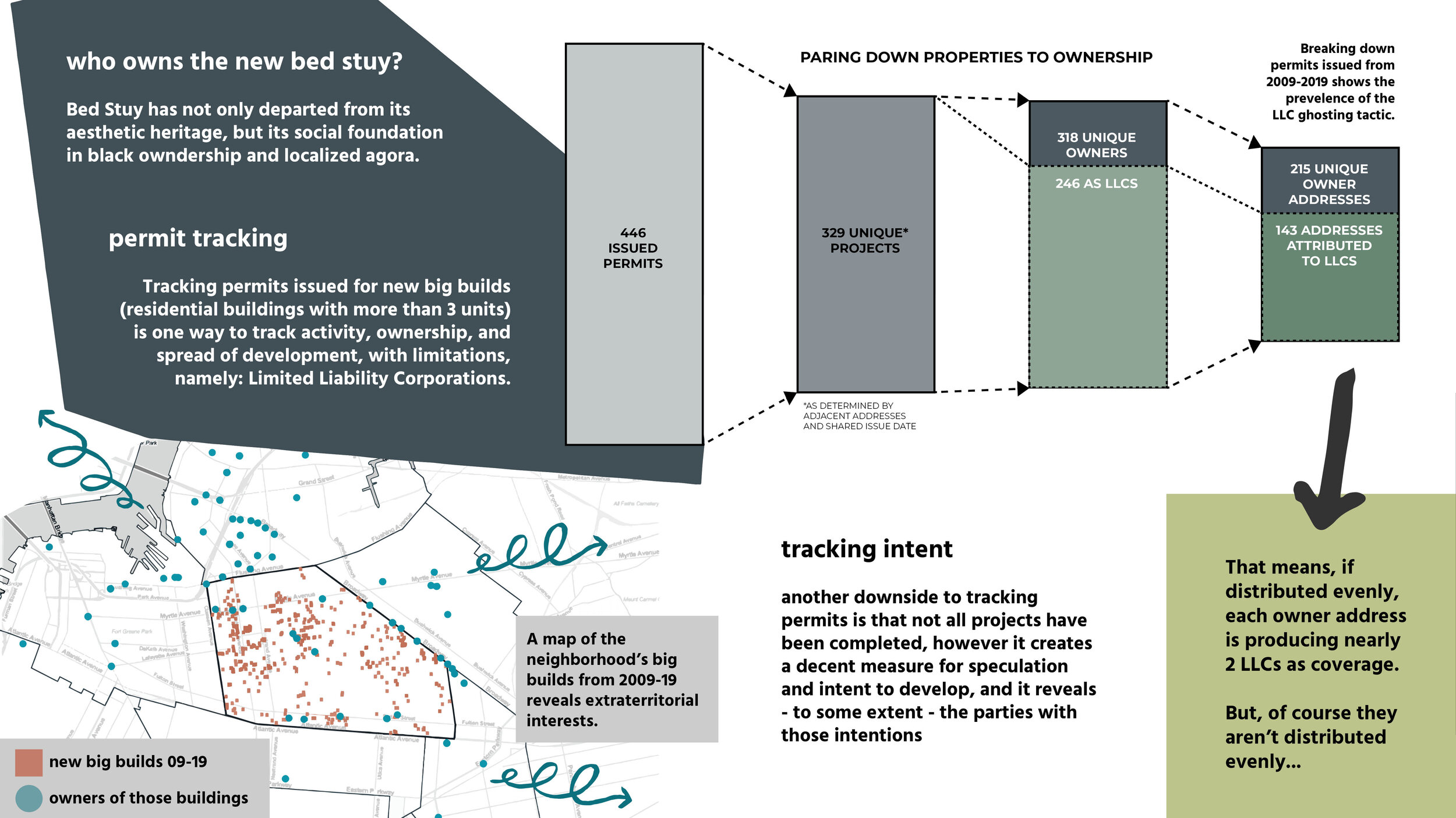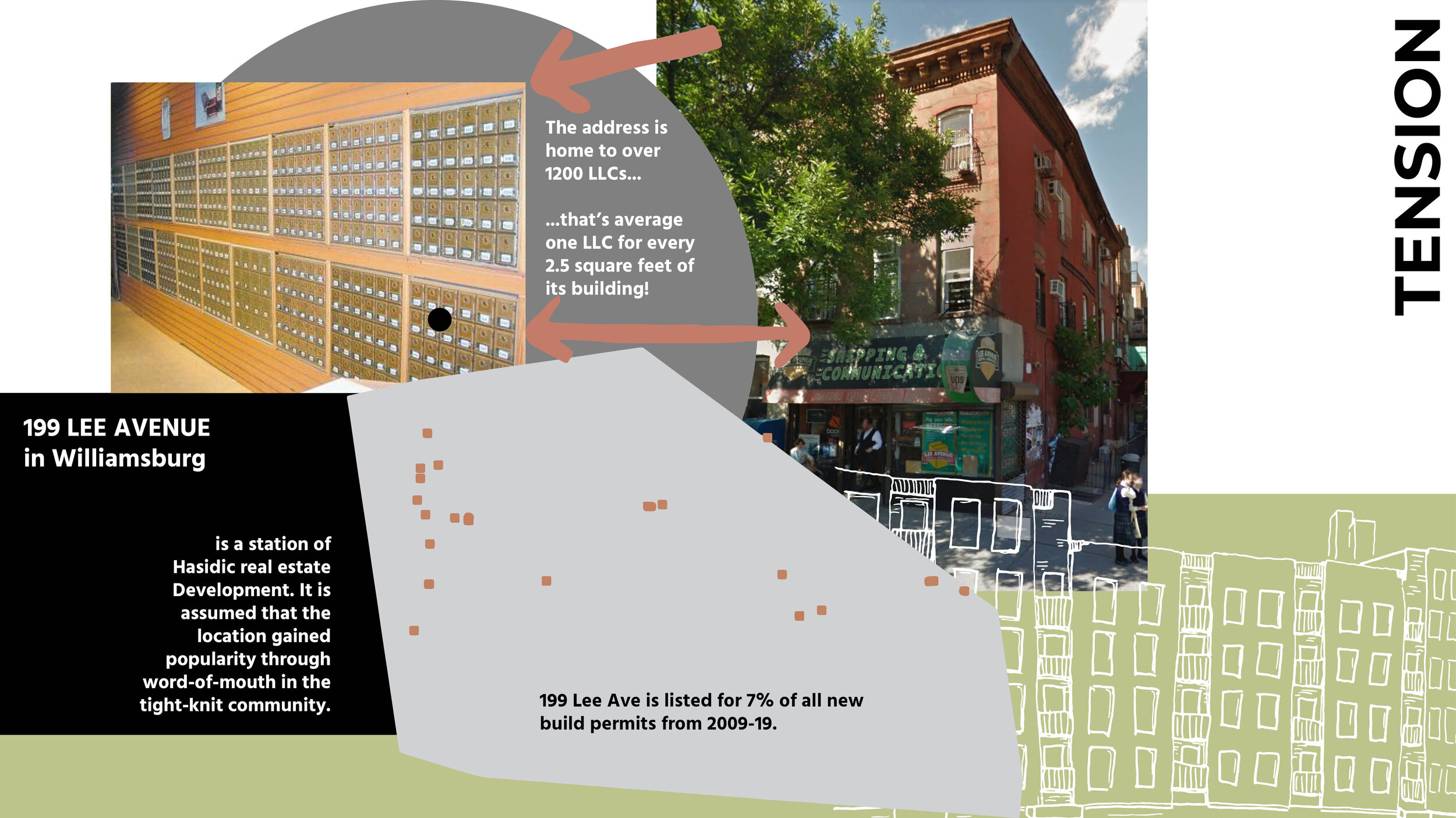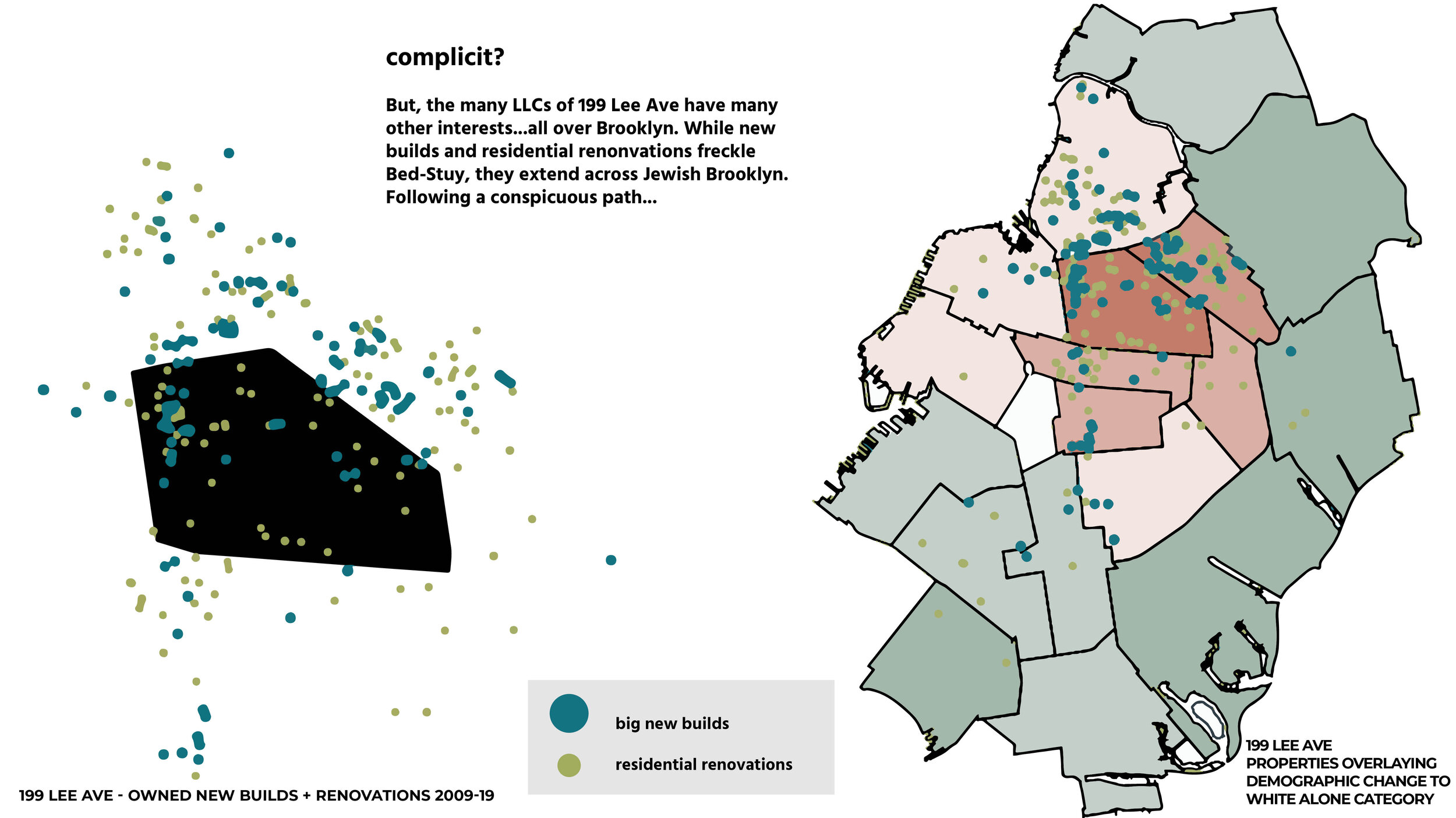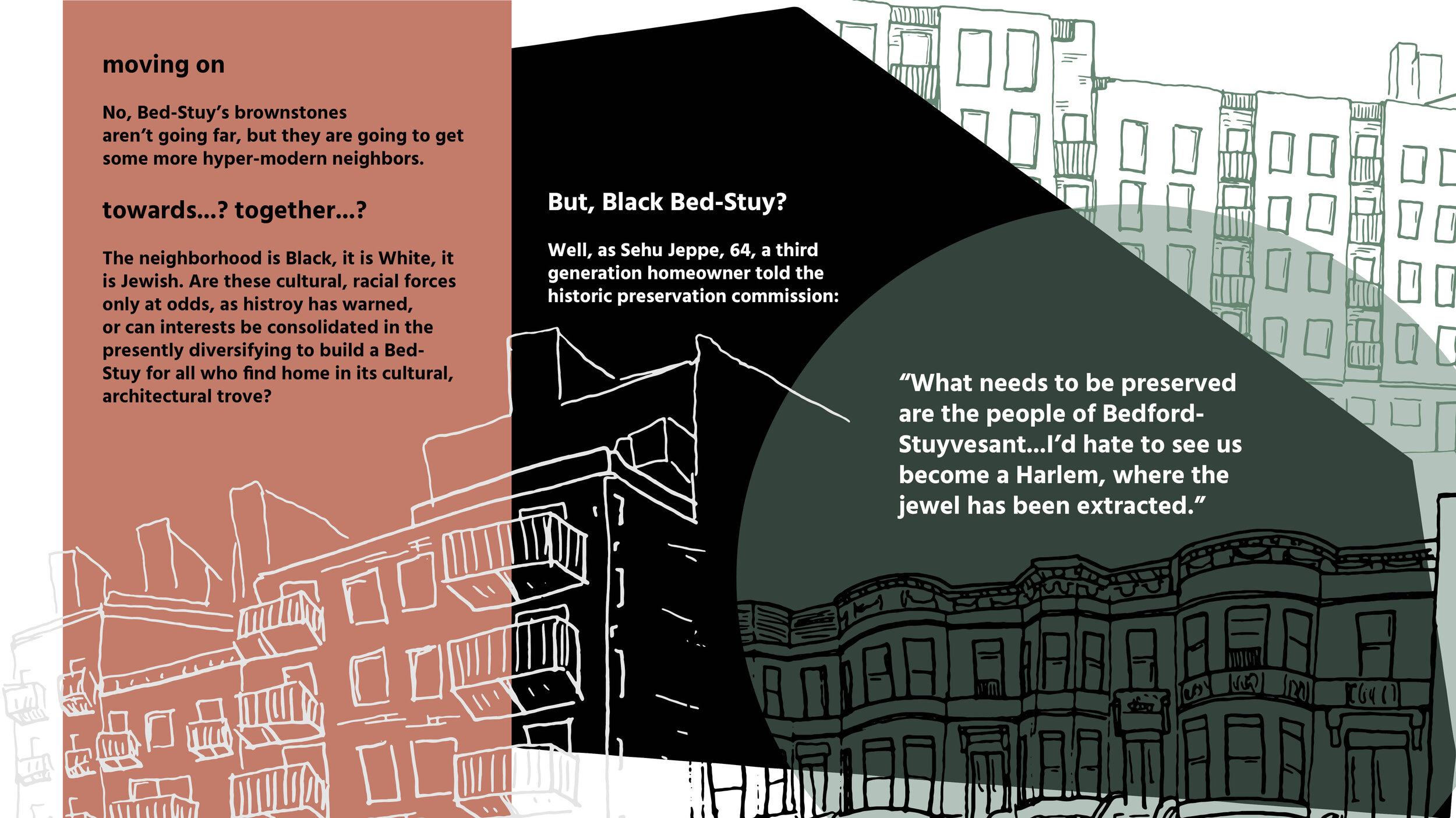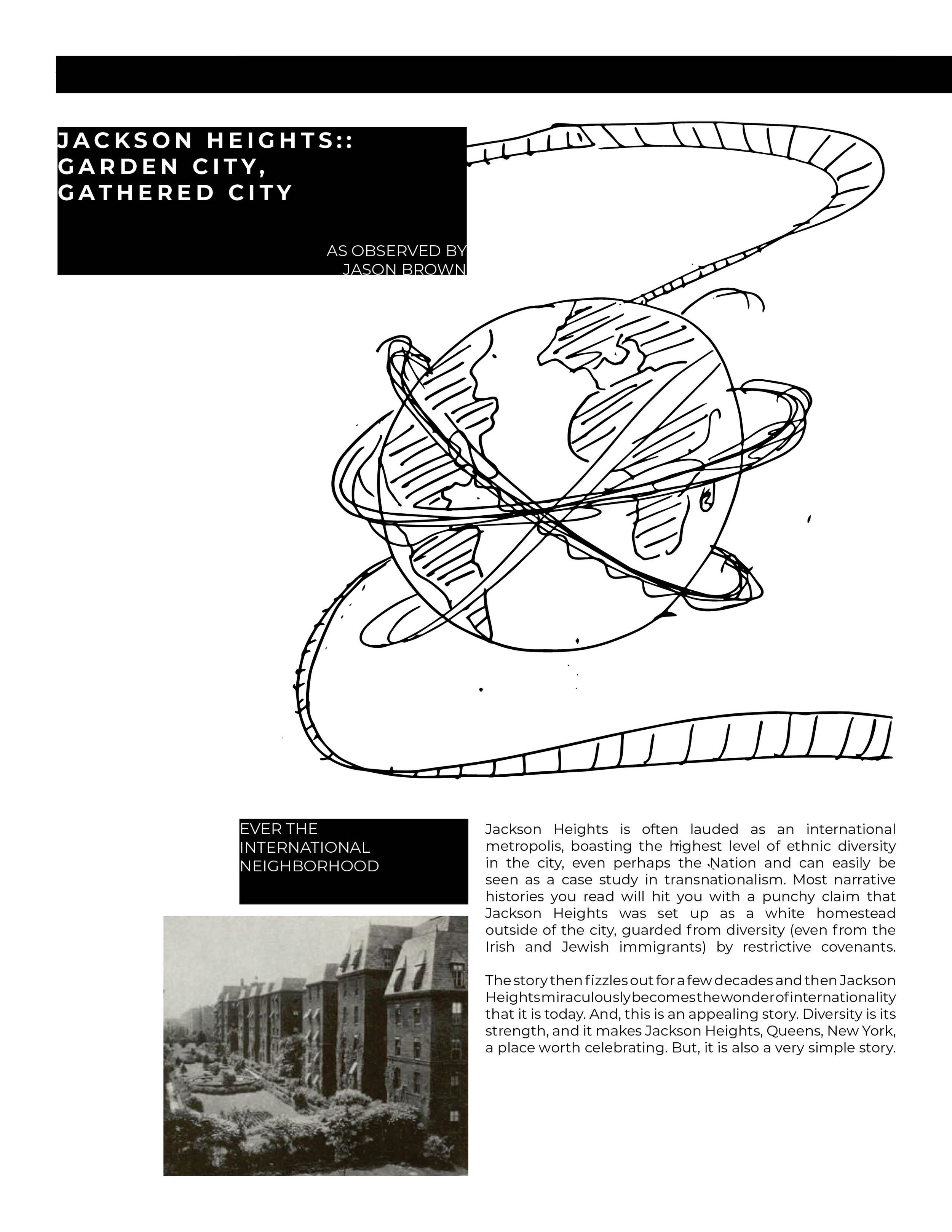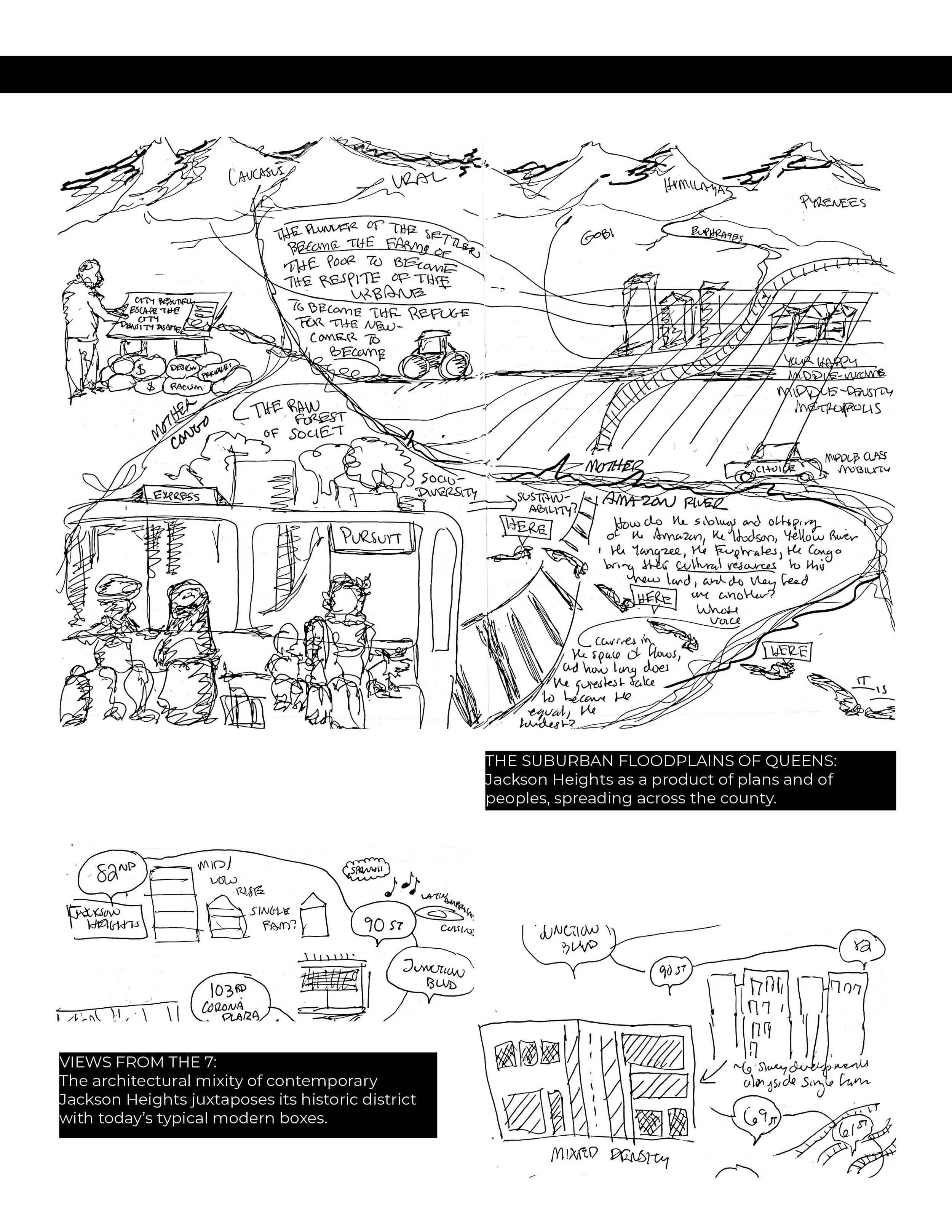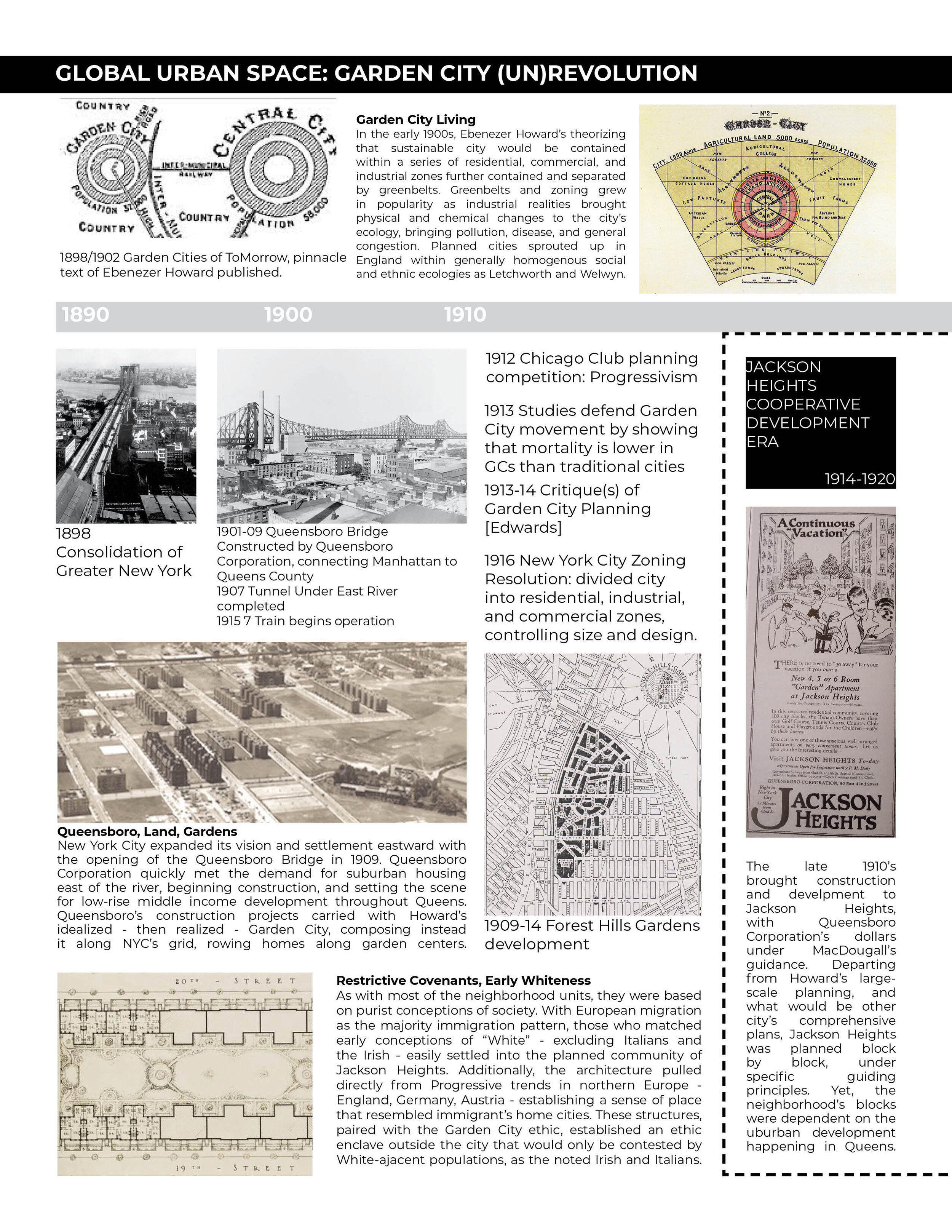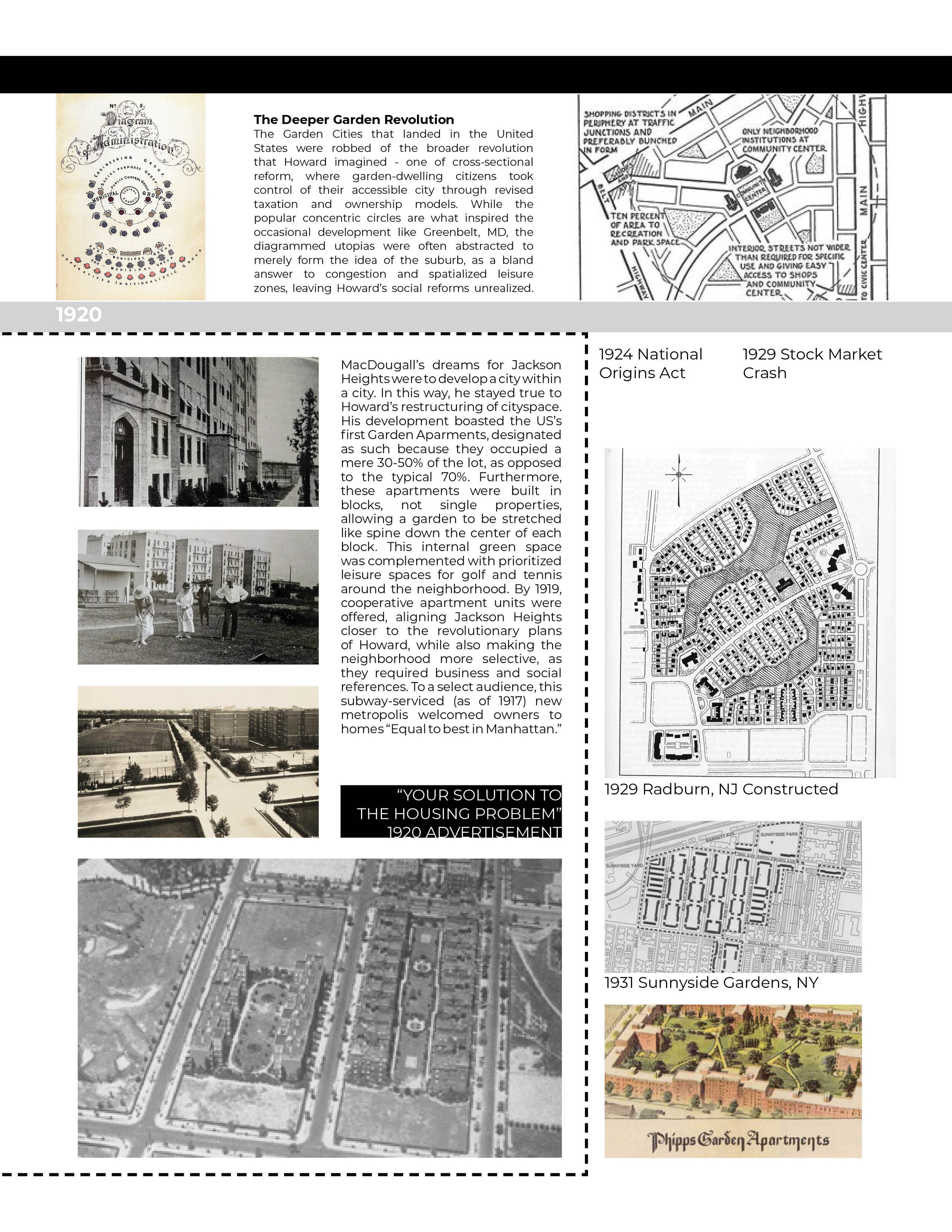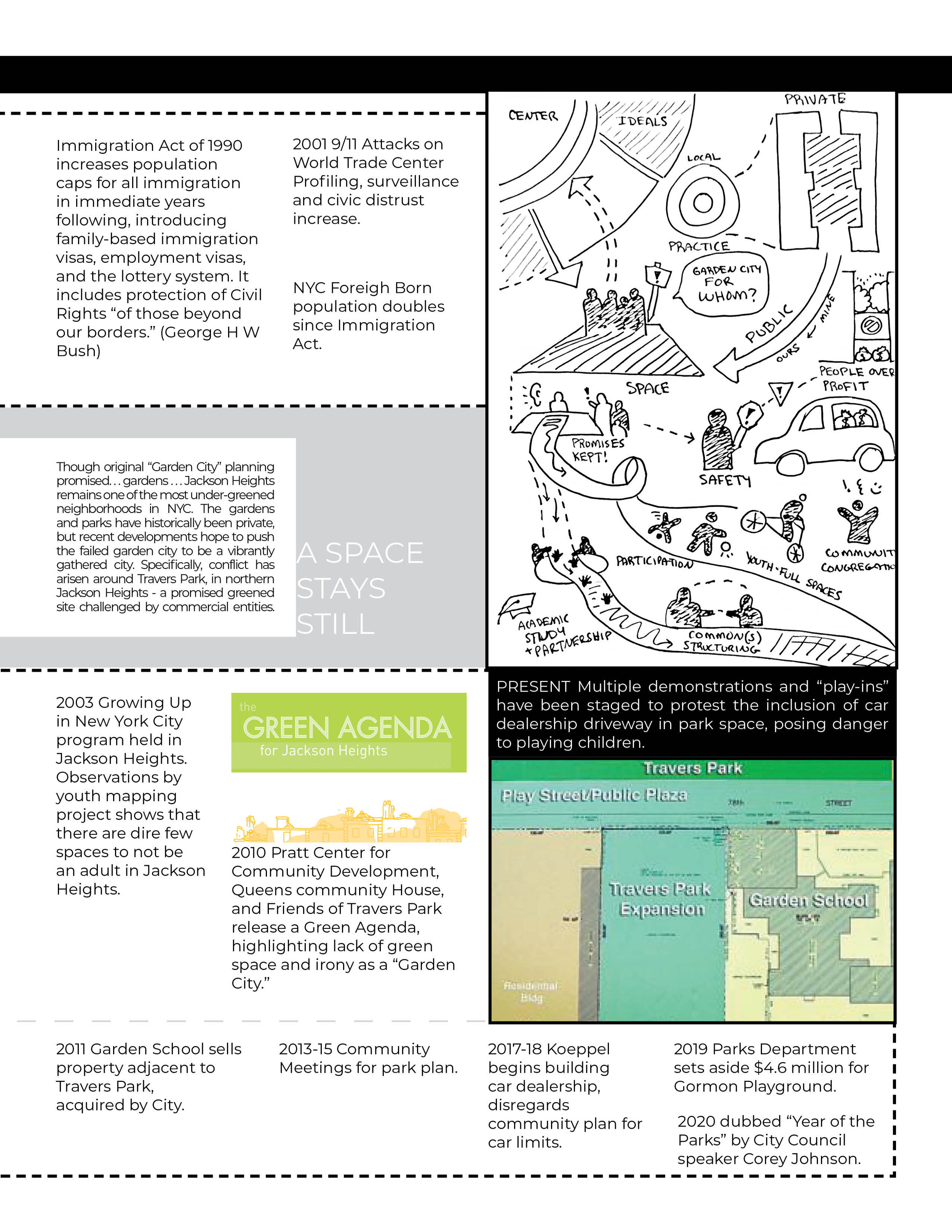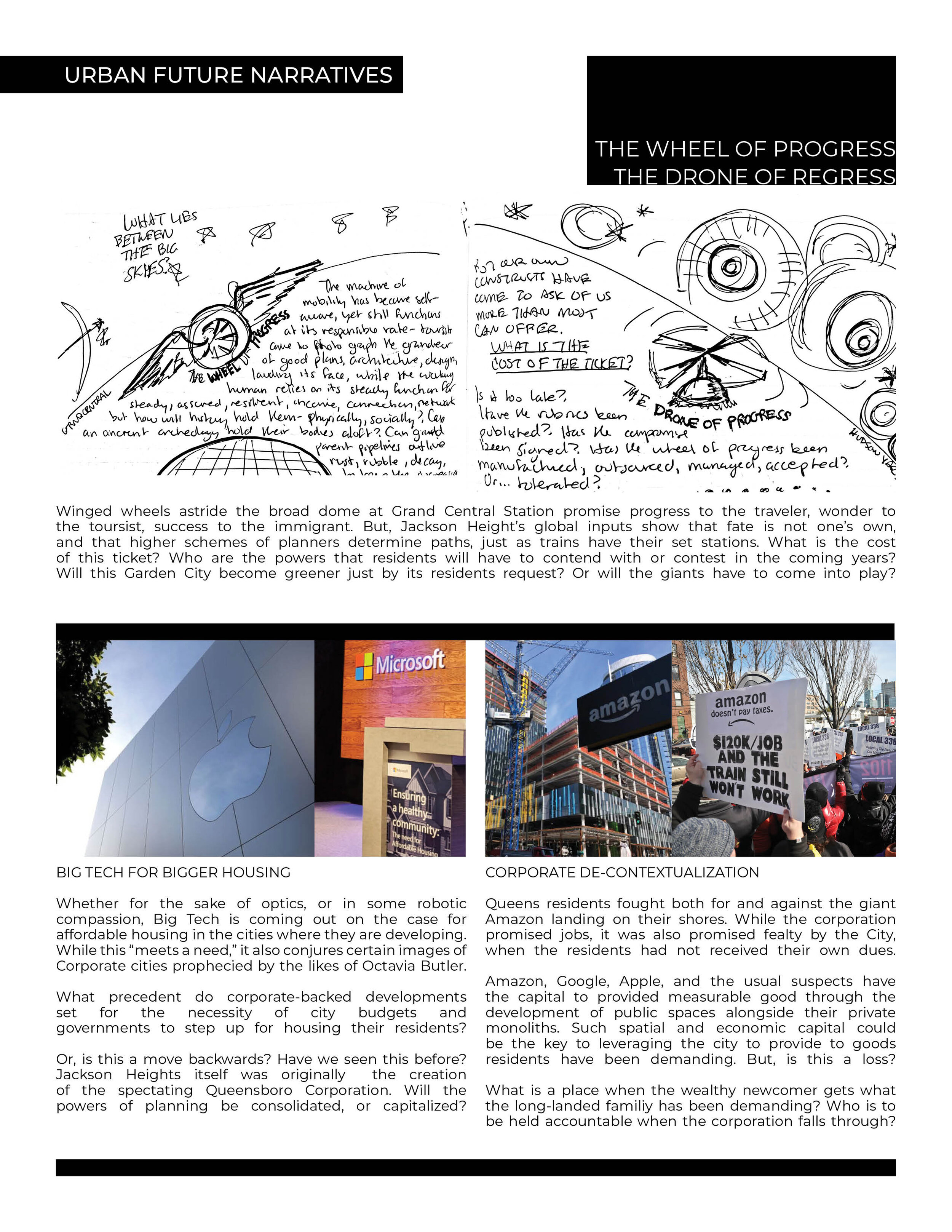Graduate Research Portfolio
MS in Design and Urban Ecologies
Parsons School of Design (2021)
The Design and Urban Ecologies program an alternative urban planning degree which focuses on citizen-centered urban design, processes, policies, and creative interventions. Residents and workers of the city are put first, as central stakeholders, with services and projects aimed towards equity, accessibility and social, cultural, and economic agency and mobilities.
Featured here are works from collective studio projects and individual research and design projects, each grounded in community participation and site-specific realities.
THESIS PROJECT:
Re-SITE-ing Reparations:
Locating Harm + Capacitating Repair
Evanston, IL
Independent Project + Community Partnerships
Campaigns to pursue black reparations are changing scales. In 2019, the city of Evanston, IL committed a budget to pursue reparations through city-based programming. Since then, black residents have shown both extreme support and nuanced rejection of the municipal process - all under black leadership. Cities, as the new site for reparations, must contend with political pluralism within the harmed community(ies) while deconstructing lasting spatial contracts of unequal access and agency. By developing and critiquing the term “spatial contract,” this research and design folio analyzes the spatiality of racial social contracts (e.g. redlining) as they relate to new local reparations efforts, place- and people-oriented programming. Using literature review, participatory mapping, digital cartography and illustration, this project proposes generative rubrics for analyzing and synthesizing black reparations campaigns as they change shape from the national precedent. Community voices reveal the complexity of localized black citizenship, whose desires pull both from decades of deferred justice felt in the black body and consciousness as well as the immediate, everyday lived experience of the black resident in their neighborhood. These findings are designed into an online atlas which compiles interviews, policy and program analysis, and cartography spanning from Evanston, IL to the historic advocacy for the national reparations bill, HR40.
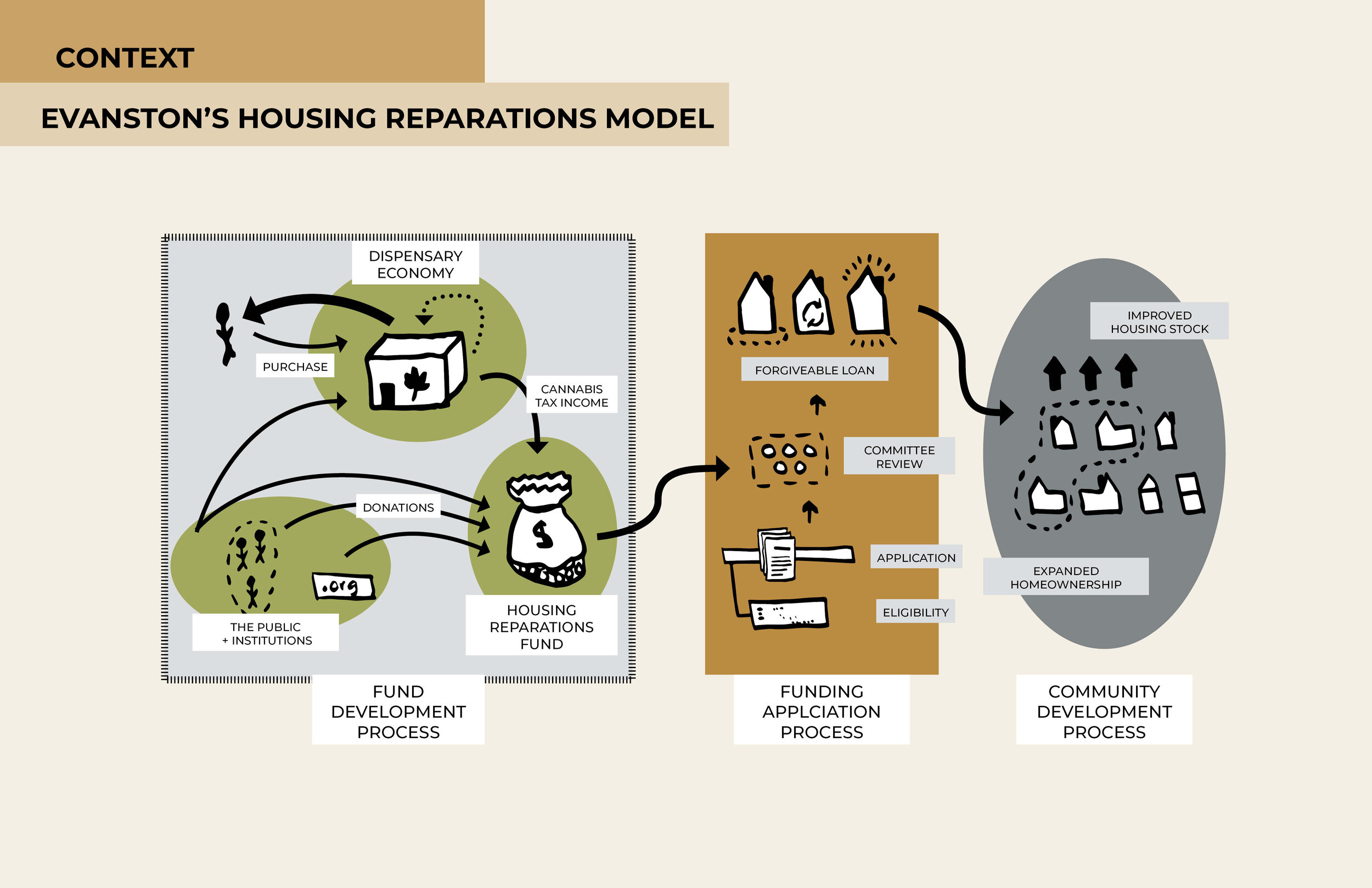
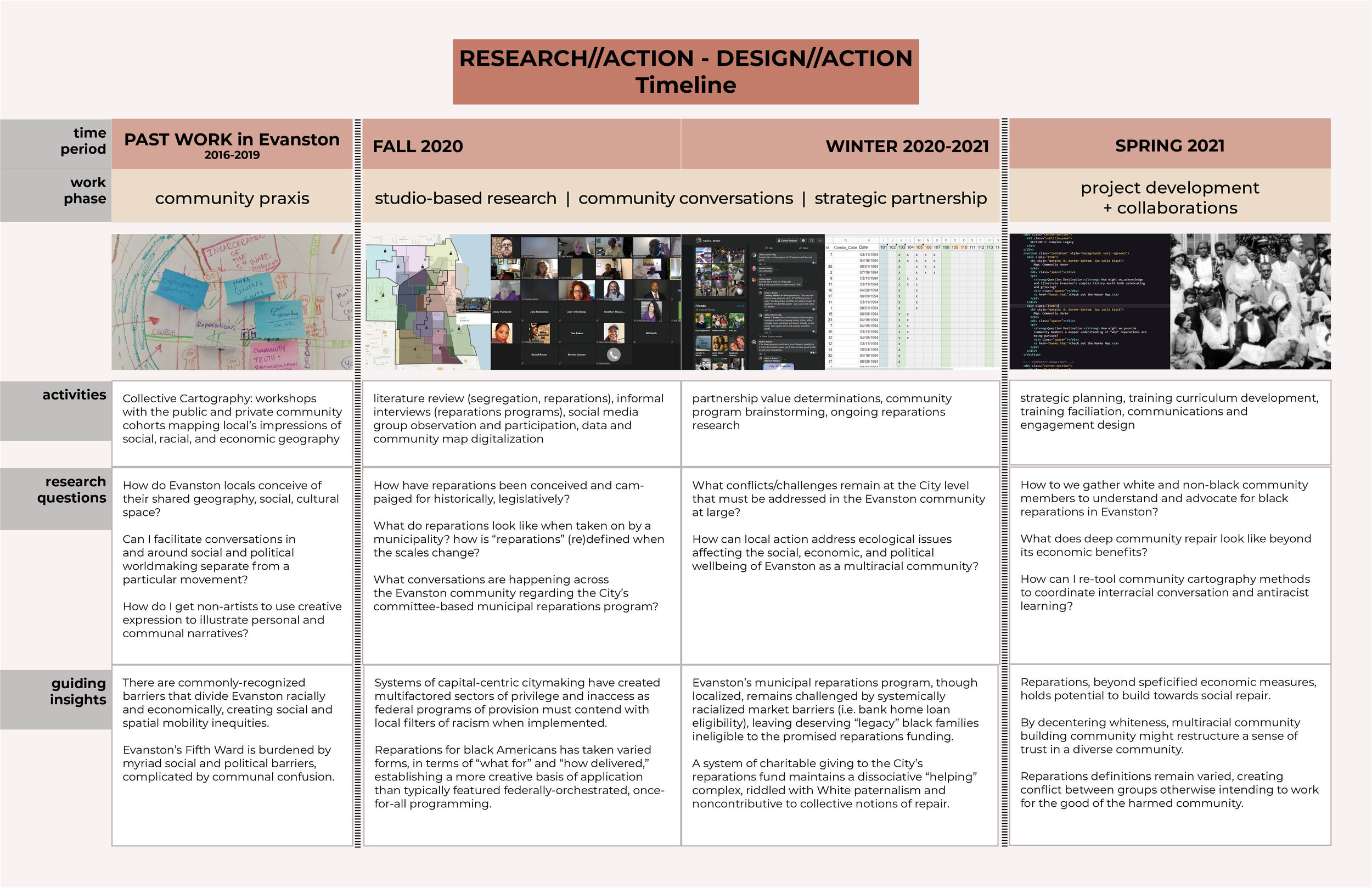
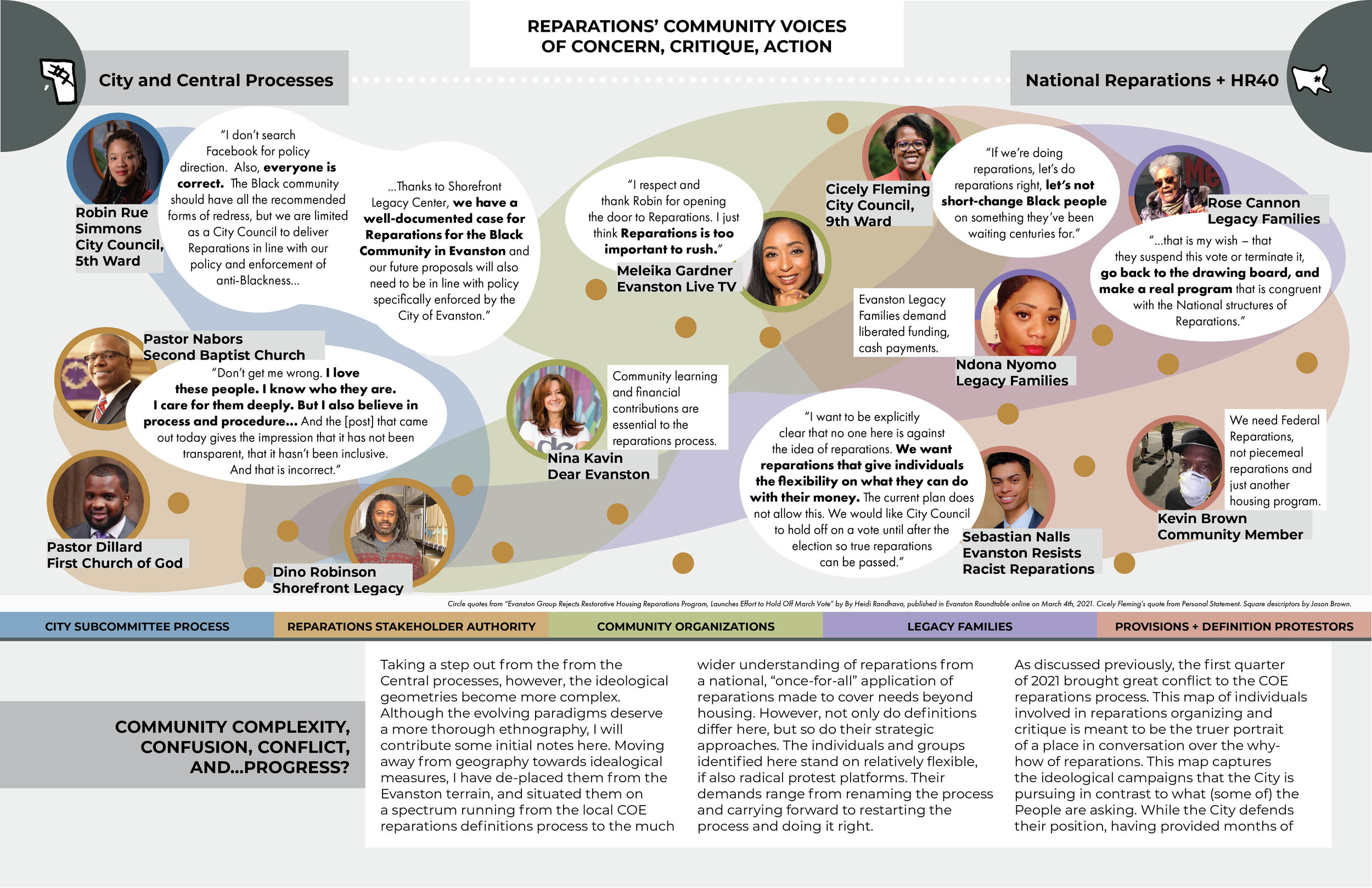
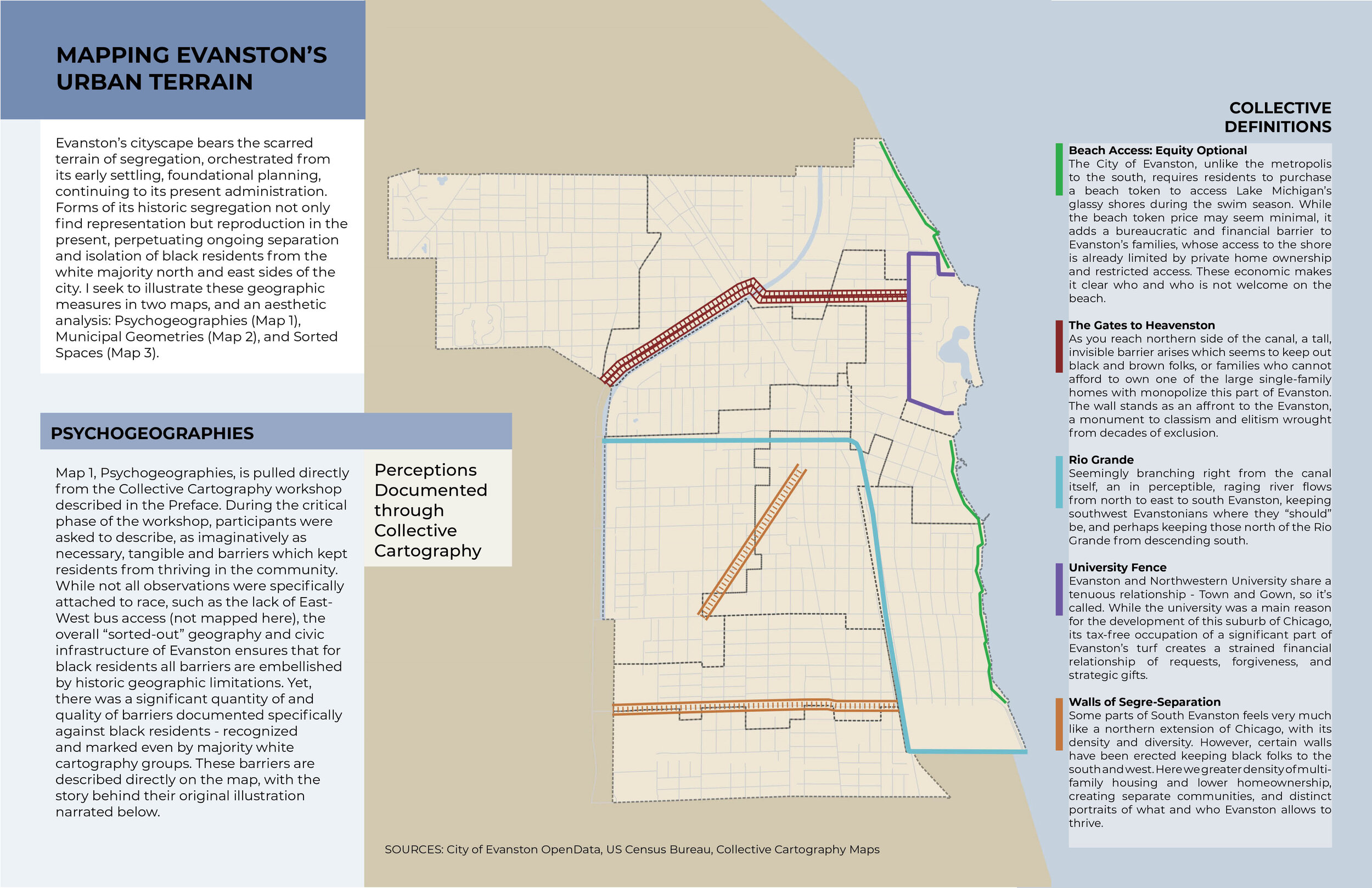
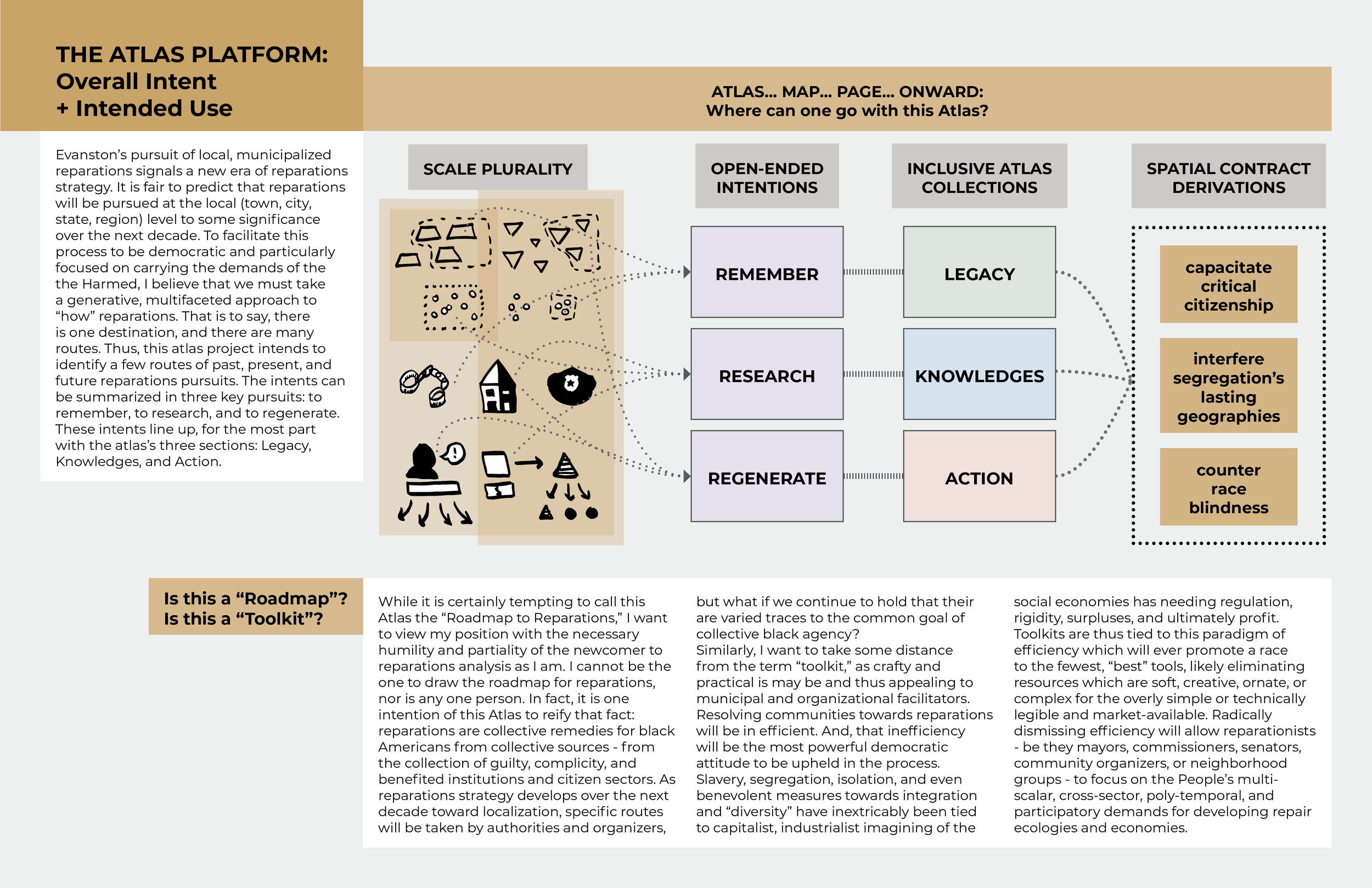

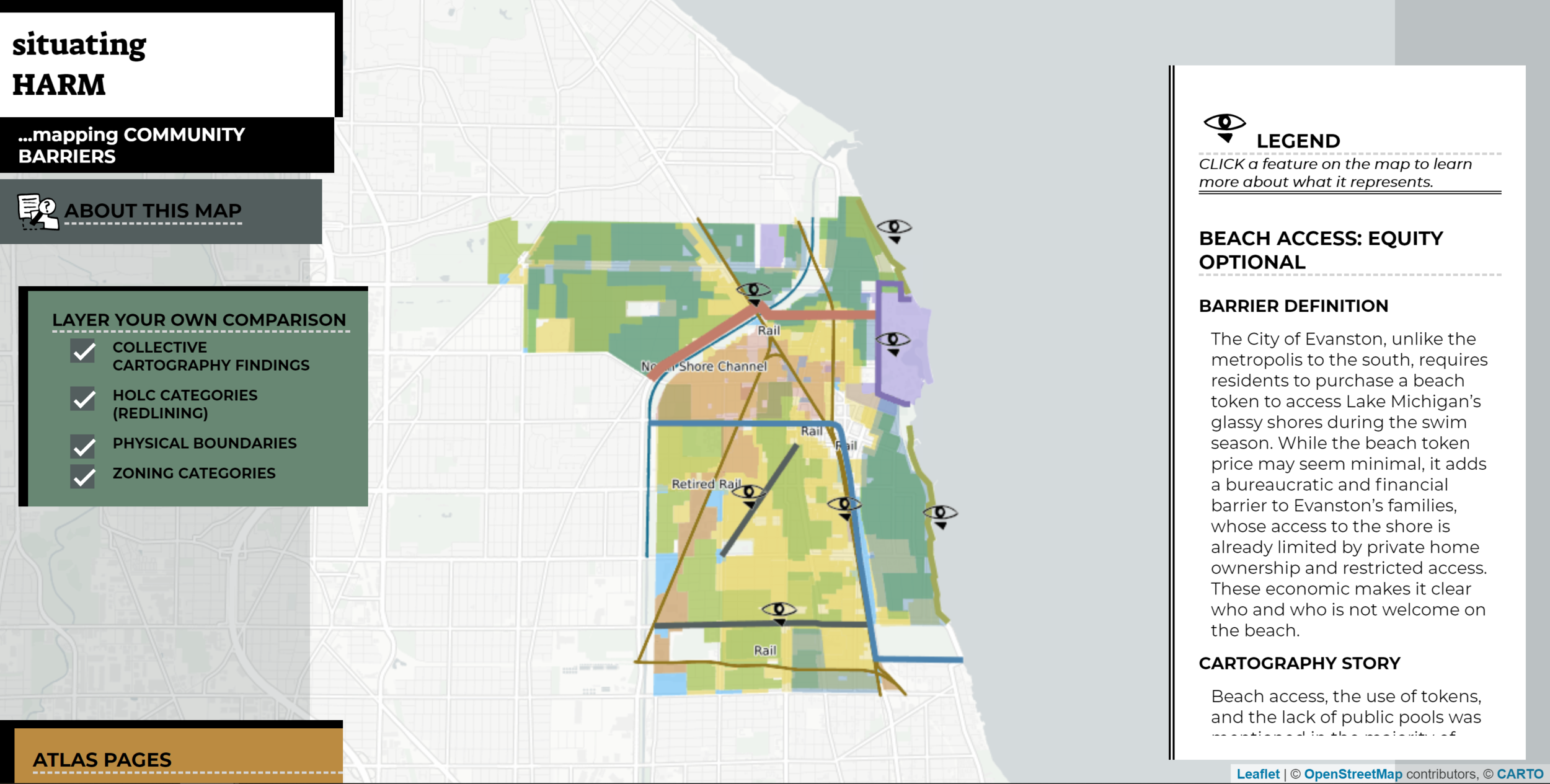
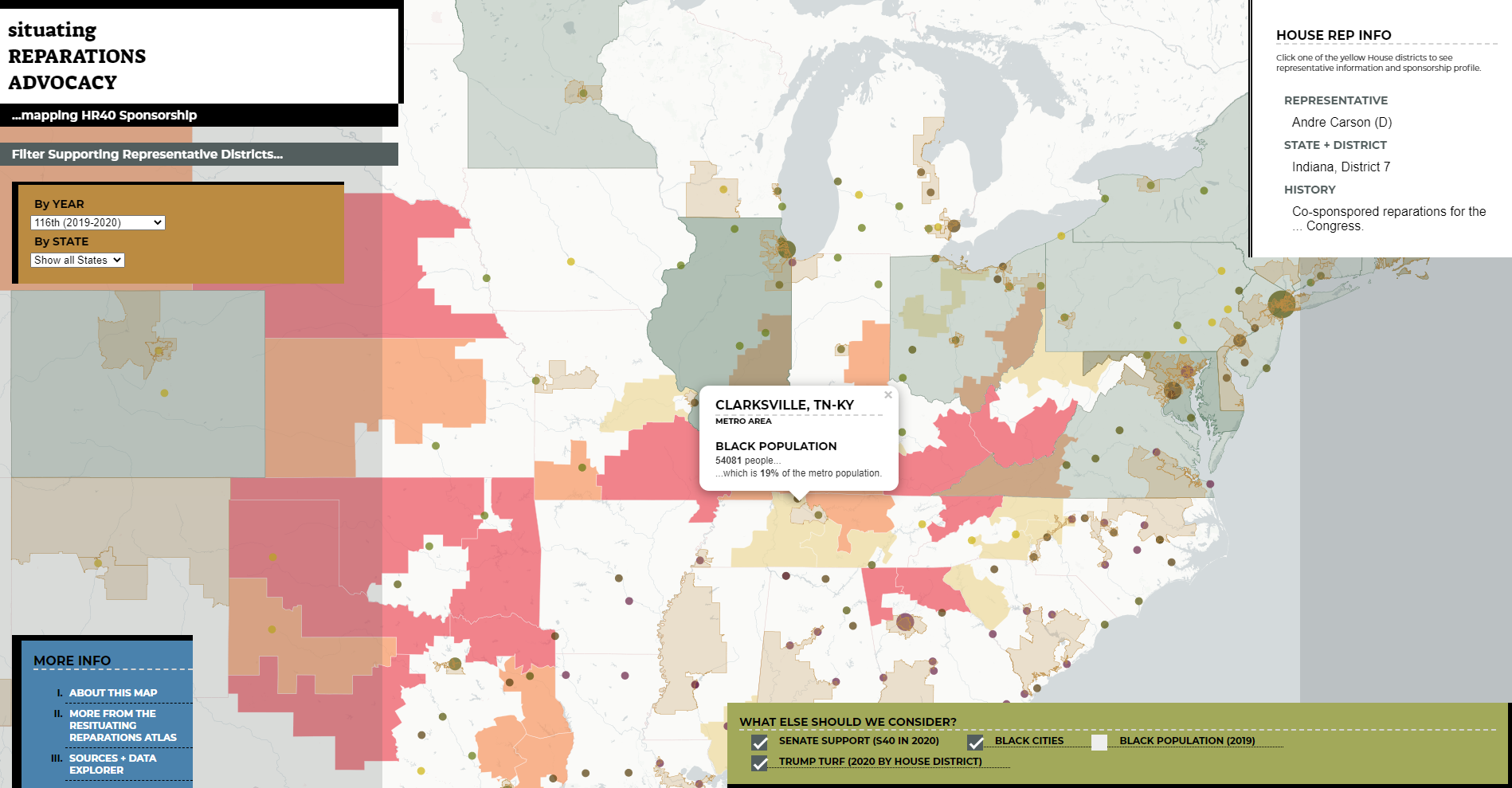
Beyond this thesis project becoming an extensive report on reparations and how they are taking shape in Evanston, I also created an online platform to explore the new and old scales of black reparations, gathering historic and participatory maps in one place. Here, citizens and fellow researchers can investigate where harm has been cataloged, and how and why “repair” is needed for black communities. You can explore the Reparations Atlas and hear about in this brief presentation, below.
RACIAL CONSCIOUSNESS MAPPING
Interview Mapping Experiment
Compiled Spring 2021
Independent Project
As I was continuing my research into black reparations, I wanted to explore more creative ways of inquiring about my own race and others’ conceptions of whiteness. I collected a series of written interviews from a small group of fellow white folks, inviting them to illustrate with me “where” their whiteness came from - learned, experienced, challenged. Larger, lingering questions remain about the role of psychogeography on our conceptions of our personal and others perceived race, but I hope that this expressive experiment might help others consider the geographic dimensions of their own narratives.
ALTERNATIVE COMMUNITY HOUSING
Research and Design Interventions
Sunset Park, Brooklyn, NY
Collaborative Project
In the Fall of 2019, my cohort continued a three-year project working with a collective of Latinx immigrant families in Sunset Park, who had been organizing around progressive housing solutions in their neighborhood. Sunset Park is a community of worker cooperatives, and its residents know their rights, and their right to stay where they have lived for generations. Nearby commercial corridor development and ensuing gentrification has created housing and economic strains for working families, such as our community partners. As they moved into an outreach stage, our graduate studio worked with them to create educational material which outlined the historical and data narratives of the neighborhood, as well as introduced progressive ideas of housing tenure through cooperative and collaborative models.
Community Education
Pamphlet Series
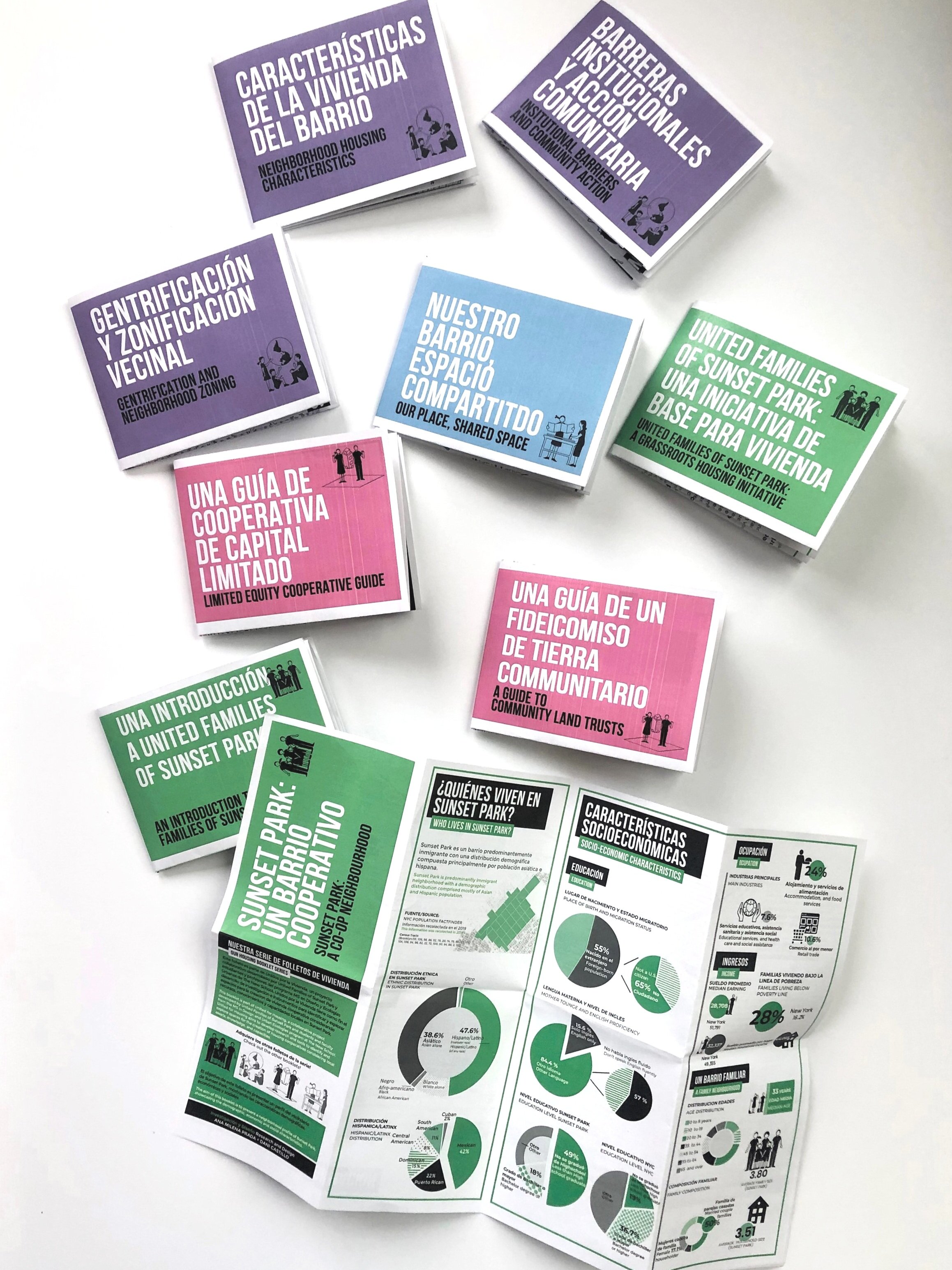
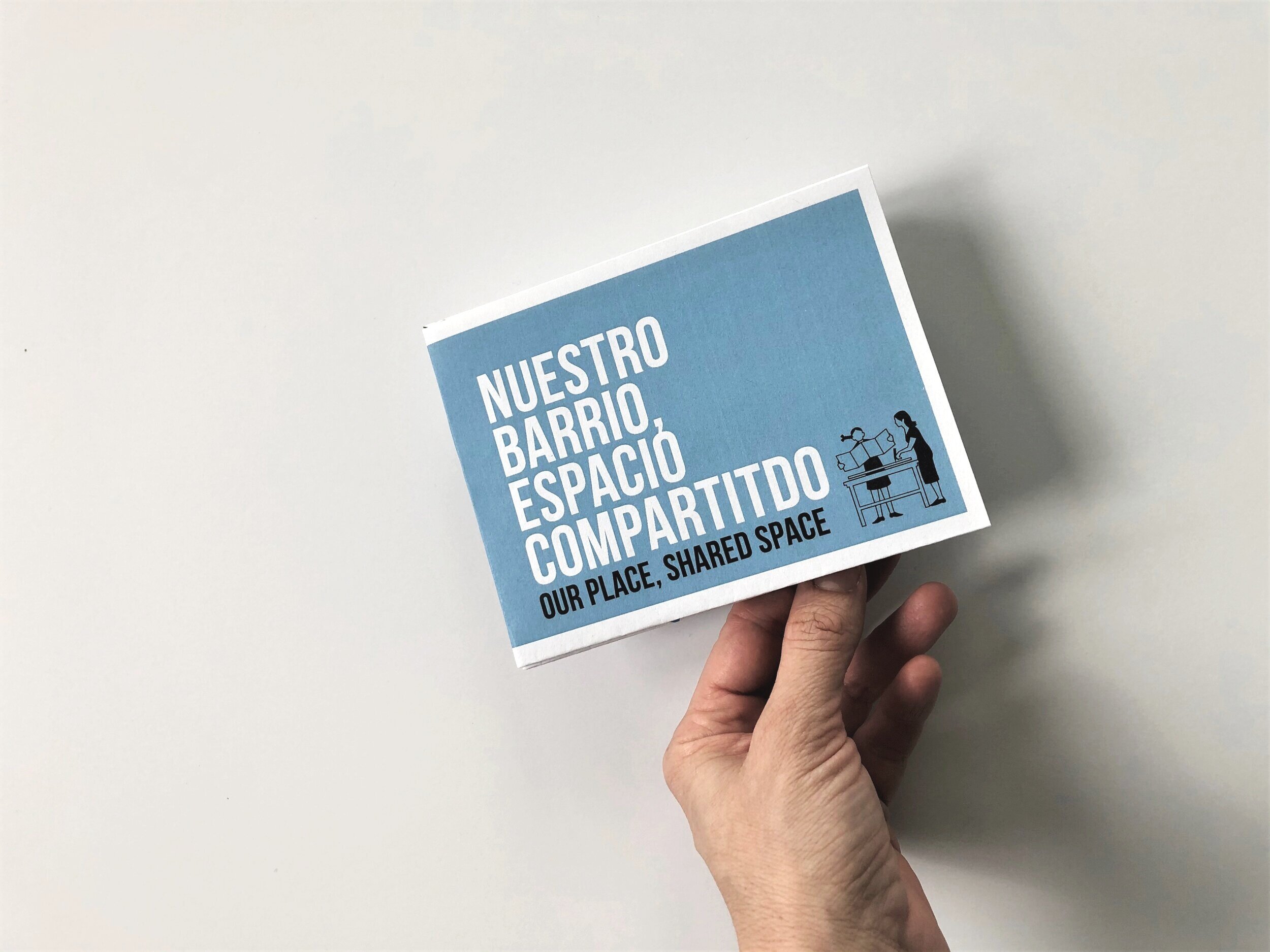


Alternative Housing Model
Design Intervention

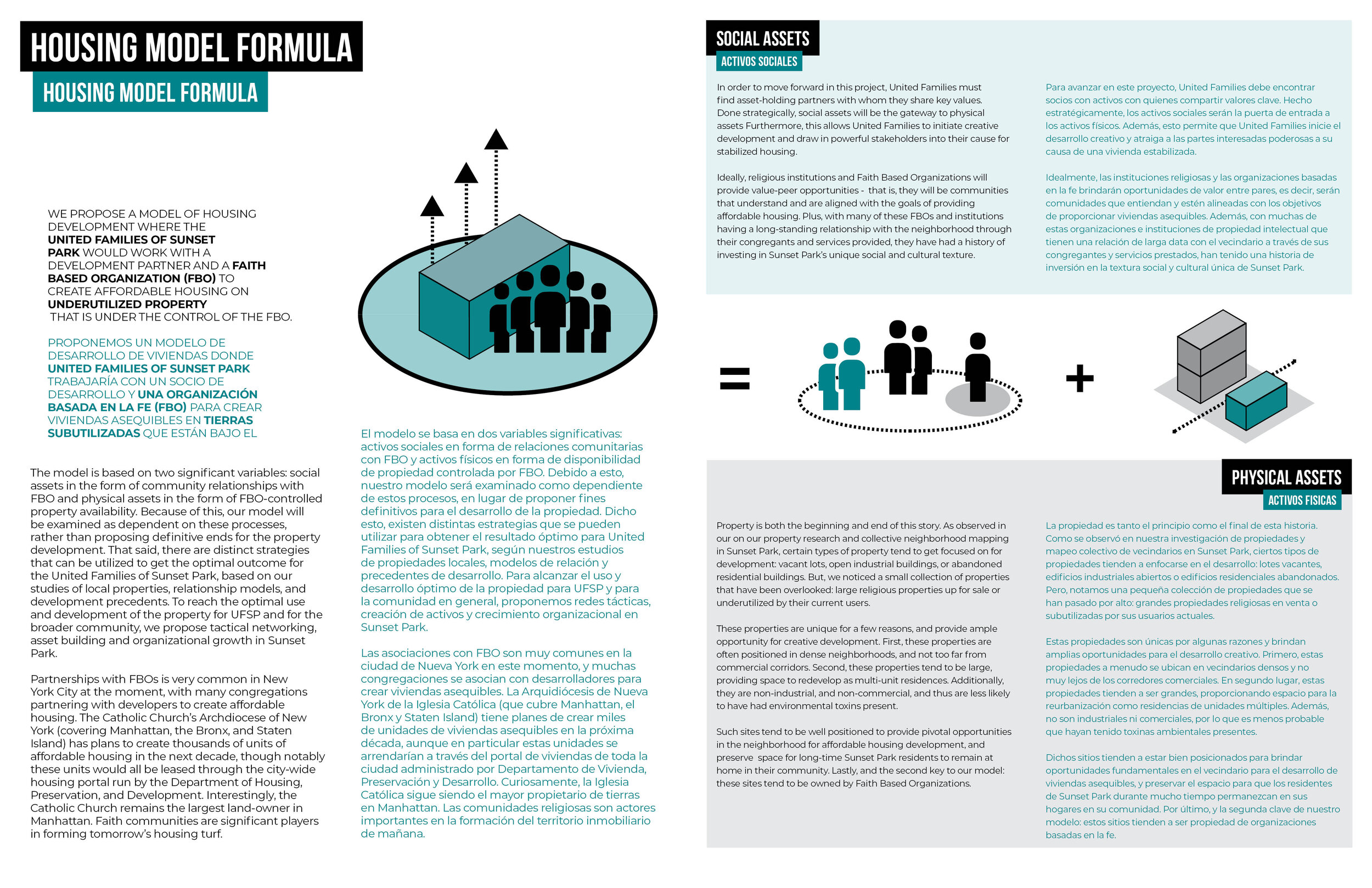
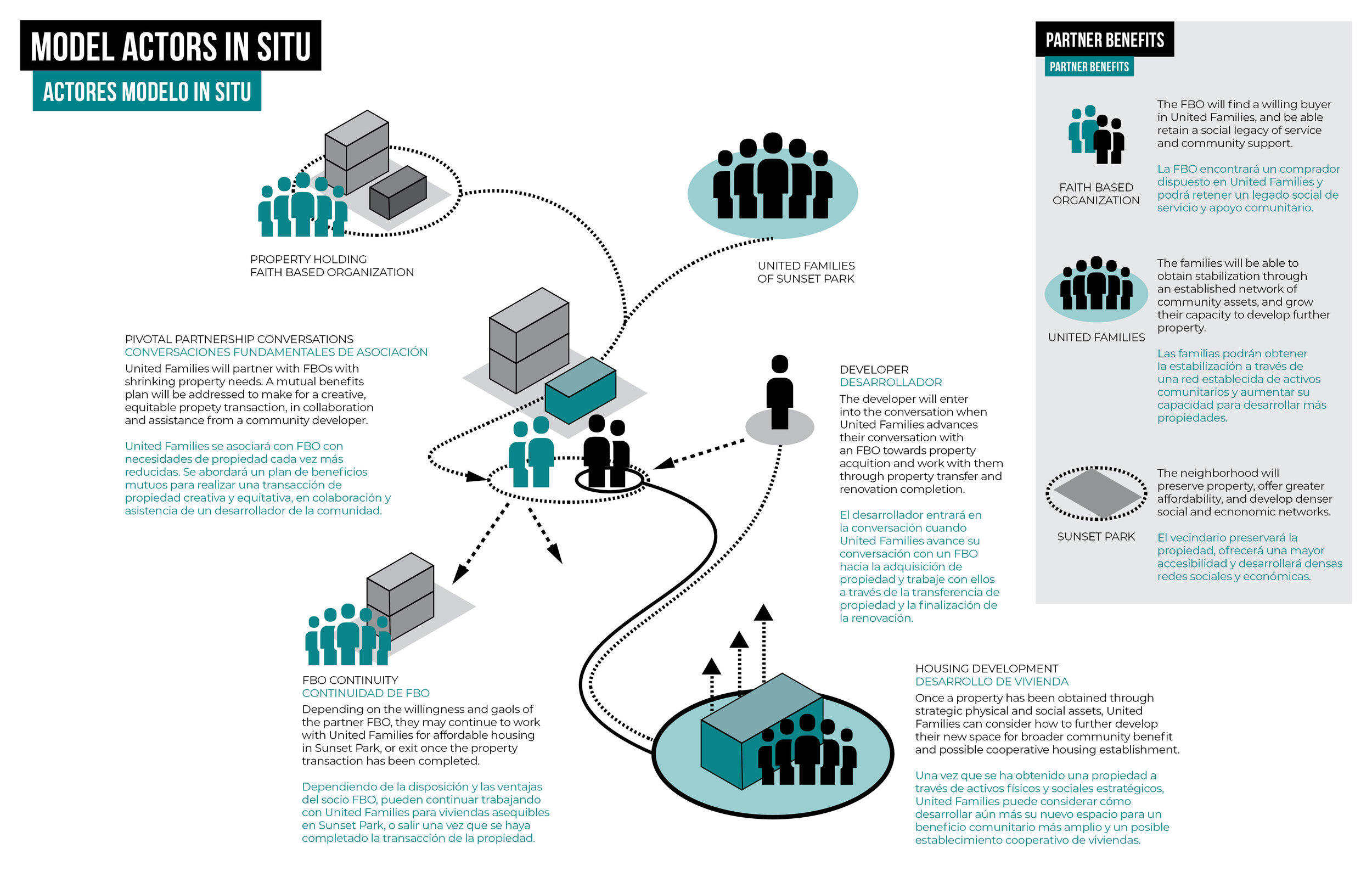
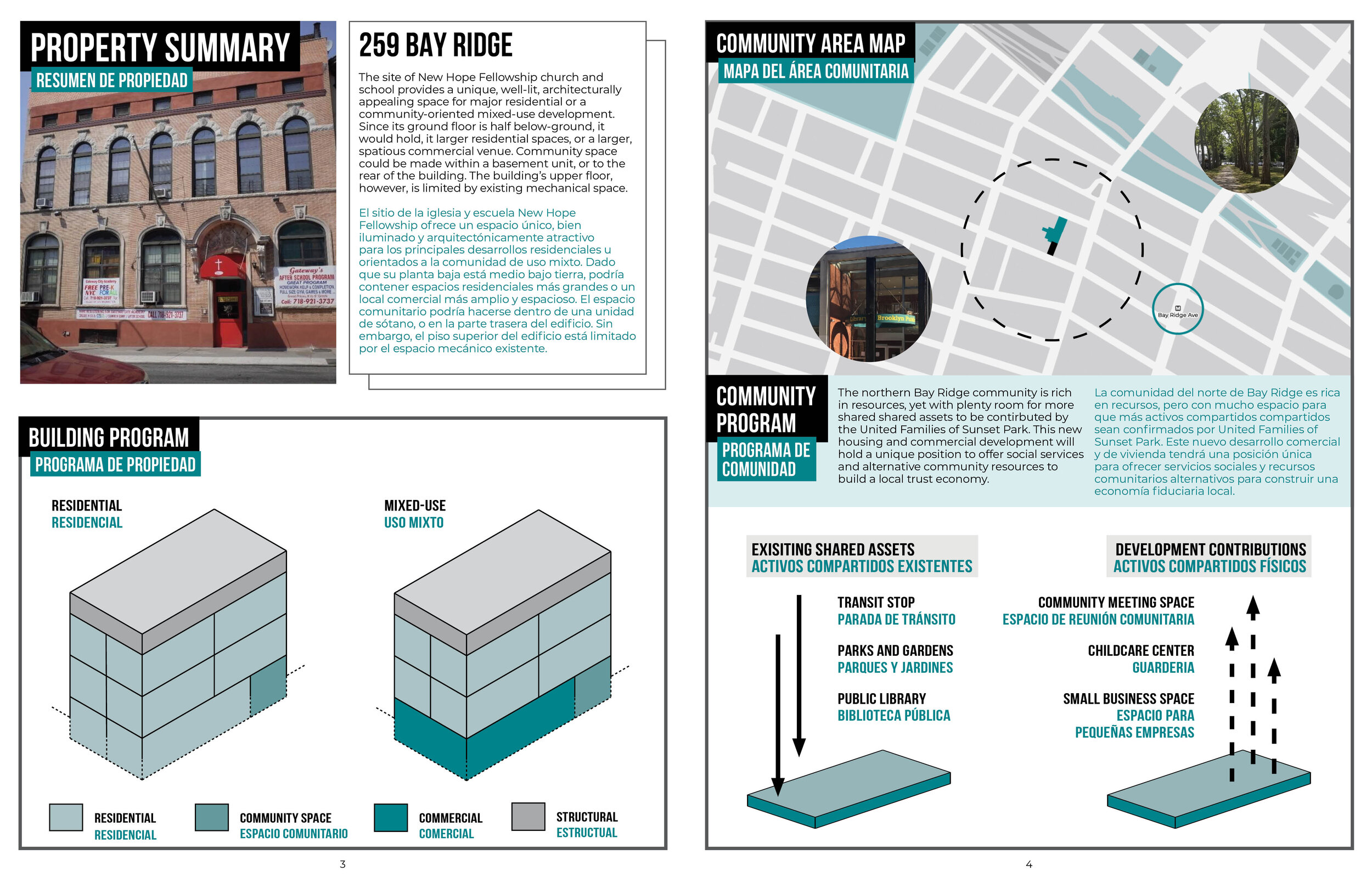

EXHIBITION:
Inscriptions en relation by Civic City
Paris, France, February 2020
The work of our graduate cohort, gathered with the preceding two years of research and organizing in the Sunset Park, was featured during Civic City’s 2020 exhibition, Inscriptions, installed at the iconic and culturally complex Palais de la Porte Dorée in Paris. The exhibition featured design, architecture, and cultural research which investigated and responded to ideas of how communities mark space with language and claim place as their own. Working with the working, immigrant families of Sunset Park, our studio’s work sought to refine the tools for these residents to make their mark against majority cultures and economies that would rather they assimilate. Inscriptions’ unique approach to these stories was to create a grand archive of our works in massive tomes, each about a meter wide when opened. Three other designers - Dani, Dani, and Ana - worked with me to create the archival publication with our professor, Gabriela Rendón. We shared the gallery with about 20 other projects from around the world.
RE::BUILDING BED-STUY
A Socio-Spatial Inquiry into
the Residential Built Environment
Bedford-Stuyvesant, Brooklyn, NY
Independent Project
This data visualization project explores the tensions of gentrification through tracking new and renovated buildings in Bedford-Stuyvesant. As a practice of creative, critical data visualization, there is much more to be explored beyond what the data reveals as an ongoing tension between Black, White, and Jewish populations played out through changes to the build environment and resultant residential opportunities. However, this data reveals that the fear the Black Bed-Stuy is disappearing has a tangible, trackable foundation.
GARDEN CITY, GATHERED CITY
Urban History Brief
Jackson Heights, Queens, NY
Independent Project
Jackson Heights is an immigrant neighborhood, in an immigrant borough (in an immigrant city!). Rich stories of social movement, cultural resettling, and political organizing continue to enliven this neighborhood. As part of my cohort’s exploration of the 7 Line MTA train, this narrative historical brief dives in to the urban morphology of Jackson Heights, as one of the most comprehensively planned neighborhoods which has come to also be one of NYC’s most diverse.
REPLACEABLE:
Retail Vacancy in Place on 6th Ave
Urban Theory Video Essay
6th Avenue Commercial Corridor, Manhattan, NY
Collaborative Project
Even before the COVID-19 Pandemic, Lower Manhattan’s 6th Avenue was losing retail and changing its face. Historic, family-run and independent goods stores were shuttering as too-familiar bank, pharmacies, and grocery stores took their place. This video essay explores some of the reasons and physical realities behind this change through story, interview, mapping and news review. Cohort-member Emily Bowe was my partner on this project.
¡Librérate! Library on My Block
Exploratory Community Intervention
Corona + Elmhurst, Queens, NY
Collaborative Project
Our cohort’s second studio was overwhelmed by the development of the COVID-19 crisis, as NYC became the epicenter in spring of 2020. As such, what would typically be a community-based project, our studio intervention became a speculative plan for public engagement, education, and input around redeveloping the Corona branch of the Queens Public Library. Rather than halting our work and outreach entirely, the pandemic revealed to use how immigrant communities such as Corona, Queens are paradoxically battered worse by public health crises (as many folks work on or near the frontlines) and yet critically engaged in community-networking for the health and safety of their neighbors through progressive mutual aid networks. Though social infrastructures like the public library took a dire hit during pandemic shut-down, new uses of public spaces revealed resilience and creativity latent in urban neighborhoods, despite municipal limitations.
HOMEBASE CITY:
Theorizing the Post-COVID Utopia
Video Essay
Imagined in April 2020
Independent Project
As our spring 2020 semester descended into pandemic madness, we were tasked to imagine what our urban realms would look like at the end of all this. Taking notes from David Harvey’s utopic Edilia, this video collages images from our world to imagine what we urbanites might strive for after lockdown. (Some of this isn’t too far off, if I do say so myself!)
